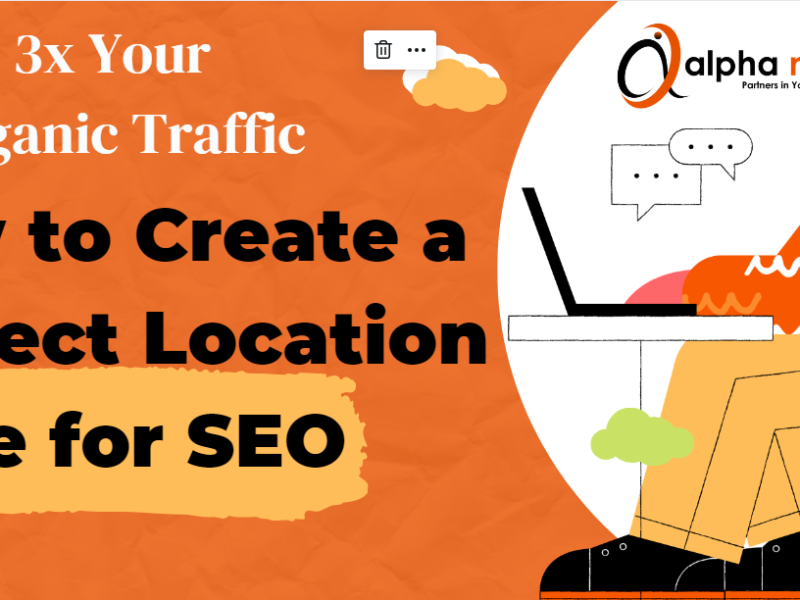Google 200 Ranking Factors 2025: The Ultimate SEO Guide
Welcome to Alpha Media’s definitive guide on Google ranking factors for 2025. As search engine optimization evolves, understanding what drives rankings is essential for online success. Authored by Anshul Sethi, this comprehensive resource reimagines Brian Dean’s foundational research at Backlinko, offering fresh insights and actionable strategies. Below, we explore the first 10 of 200 key factors that influence your site’s performance on Google, updated for the latest algorithms as of March 16, 2025. Inspired by the pioneering work of Brian Dean at Backlinko
Section 1: Content Quality and Structure (Factors 1-20)
High-quality content is the backbone of SEO success. Here’s how to create and structure content that Google loves.
1. Exceptional Content Quality
- What It Is: Produce original, in-depth content that delivers value to your audience.
- Why It Matters: Google prioritizes content that thoroughly addresses user needs, improving engagement and authority. Aim for 1,500+ words with unique insights.

2. Keyword in Page URL
- What It Is: Include your target keyword in the URL of your page.
- Why It Matters: A keyword-rich URL signals relevance to Google, helping users and bots understand your page’s focus.
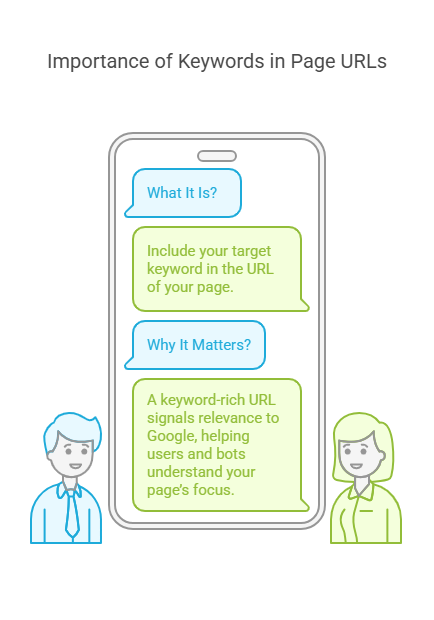
3. Regular Content Updates
- What It Is: Refresh your content, especially for trending or time-sensitive topics.
- Why It Matters: Google’s freshness algorithm favors updated content, ensuring your site stays competitive for current searches.
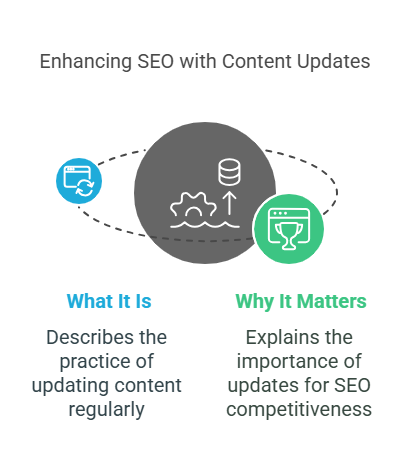
4. In-Depth Content Coverage
- What It Is: Create detailed, comprehensive posts that explore a topic fully.
- Why It Matters: Thorough content demonstrates expertise, reducing bounce rates and increasing time on the page.
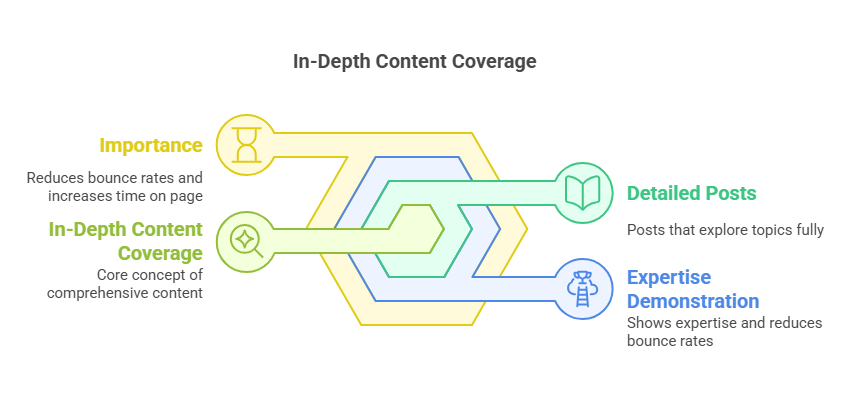
5. Alignment with Search Intent
- What It Is: Ensure your content matches the user’s search intent (e.g., informational, transactional).
- Why It Matters: Google rewards content that satisfies user queries, improving rankings and user satisfaction.
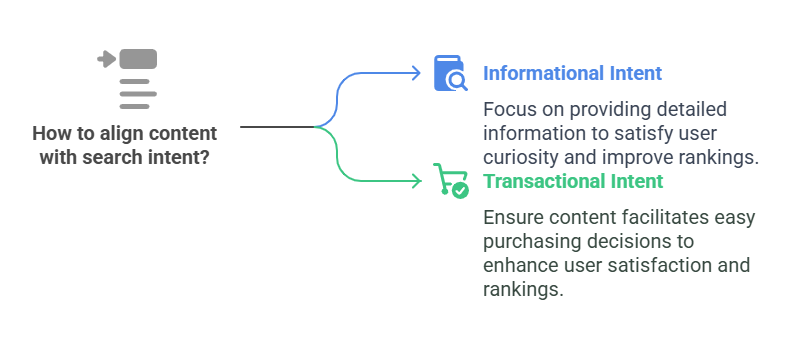
6. Engaging Headlines
- What It Is: Write compelling, clickable headlines with keywords.
- Why It Matters: Strong headlines improve click-through rates, signaling to Google that your content is relevant.
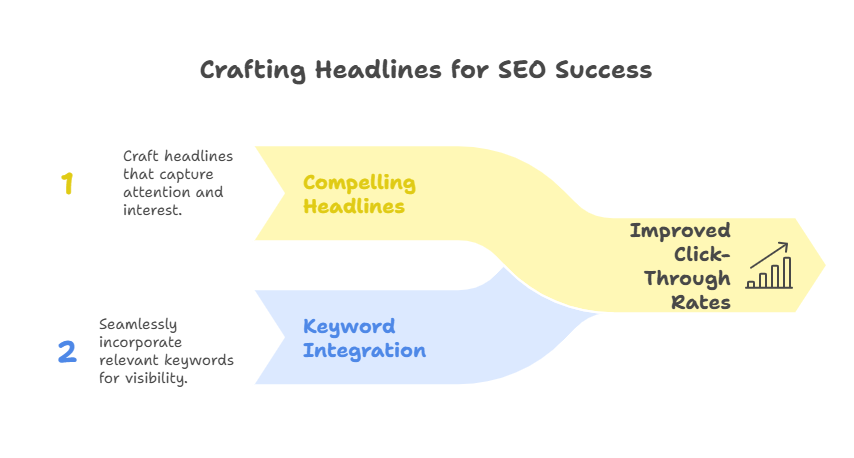
7. Internal Linking Strategy
- What It Is: Link to related pages within your site.
- Why It Matters: Internal links help Google crawl your site and distribute page authority, enhancing user navigation.

8. Readable Content Format
- What It Is: Use short paragraphs, bullet points, and subheadings for scannability.
- Why It Matters: Readable content keeps users engaged longer, reducing bounce rates and boosting dwell time.
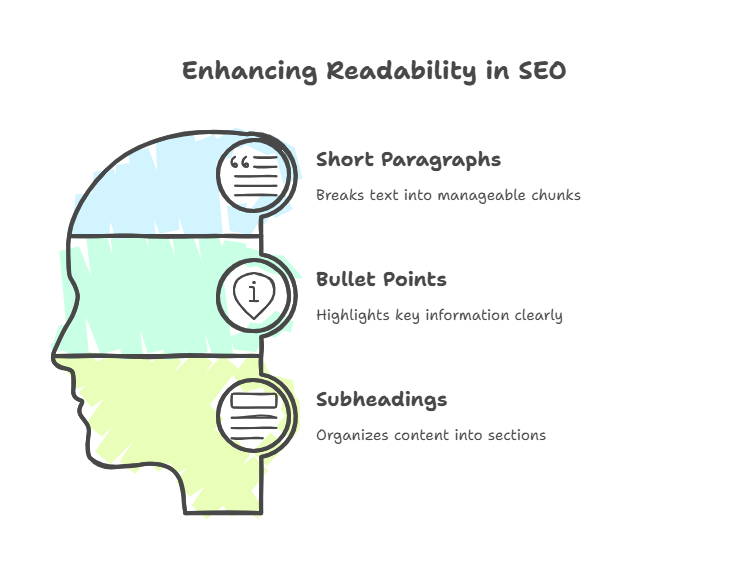
9. Unique Insights and Data
- What It Is: Include original research, statistics, or perspectives.
- Why It Matters: Unique content establishes your site as an authority, encouraging backlinks and shares.
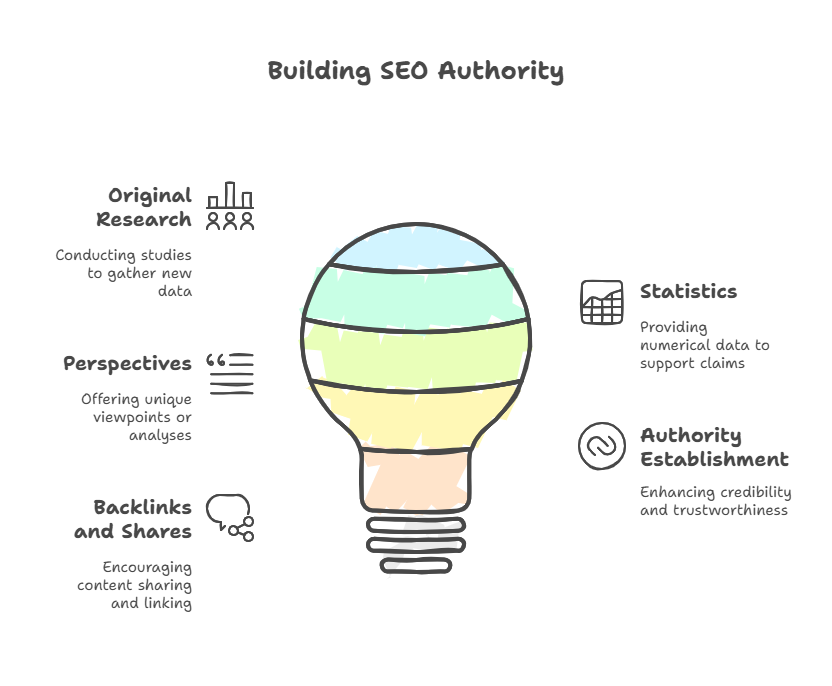
10. Multimedia Integration
- What It Is: Add images, videos, or infographics to your content.
- Why It Matters: Visuals enhance engagement, keeping users on your page longer, which Google interprets as a quality signal.
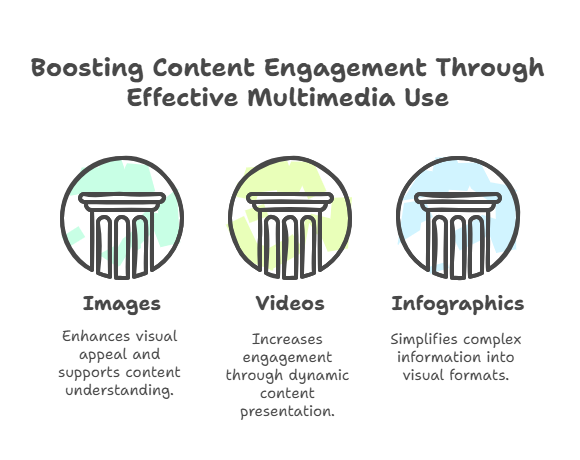
11. Keyword in H1 Tag
- What It Is: Place your primary keyword in the H1 tag.
- Why It Matters: The H1 tag helps Google understand the main topic, improving on-page relevance.
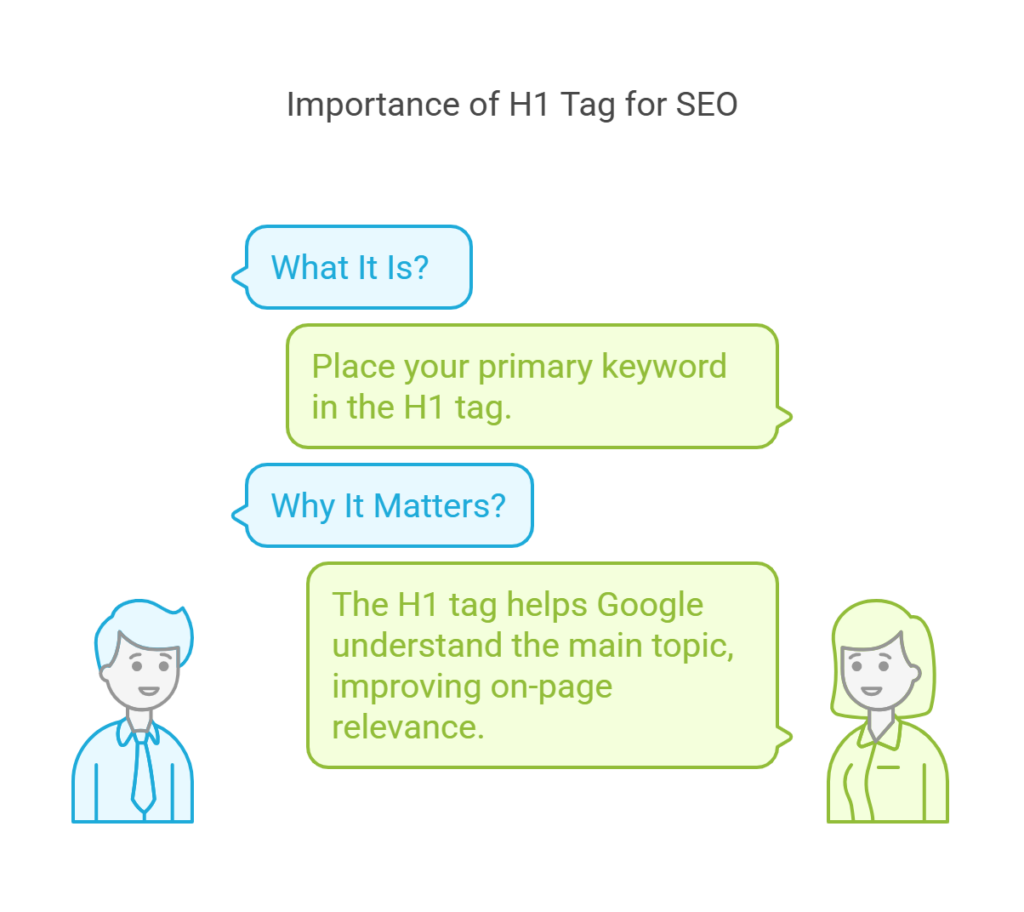
12. Content Length Matters
- What It Is: Aim for longer content (1,800+ words) for key topics.
- Why It Matters: Longer content often covers topics more thoroughly, increasing its chances of ranking higher.
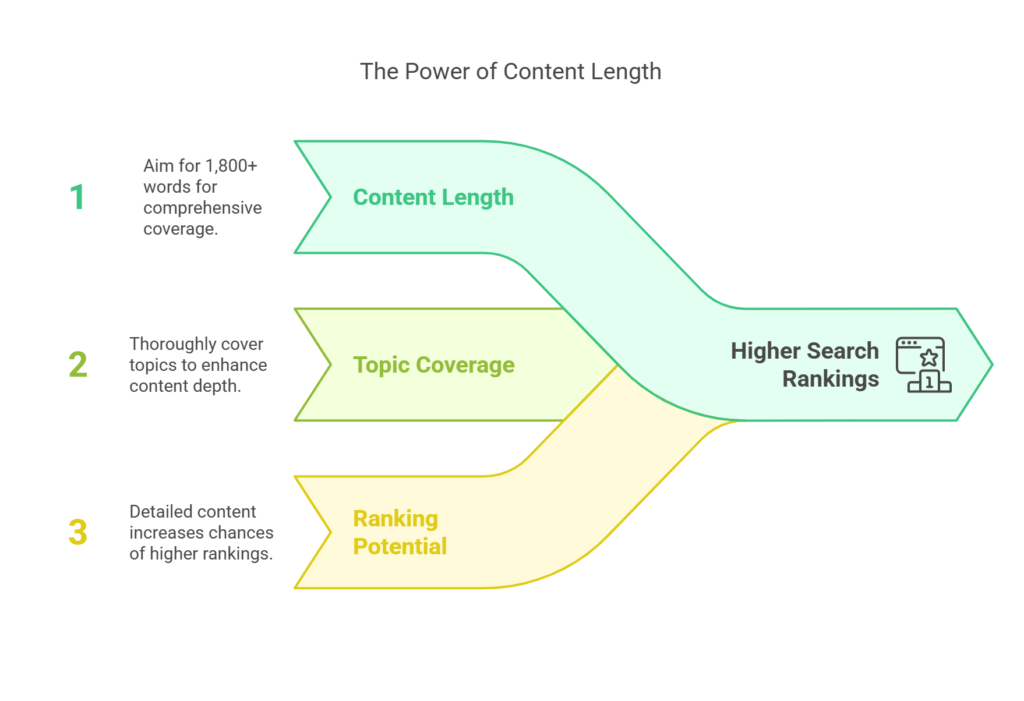
13. Accurate and Trustworthy Content
- What It Is: Ensure all information is fact-checked and reliable.
- Why It Matters: Google values trustworthiness, especially for YMYL (Your Money, Your Life) topics, impacting rankings.
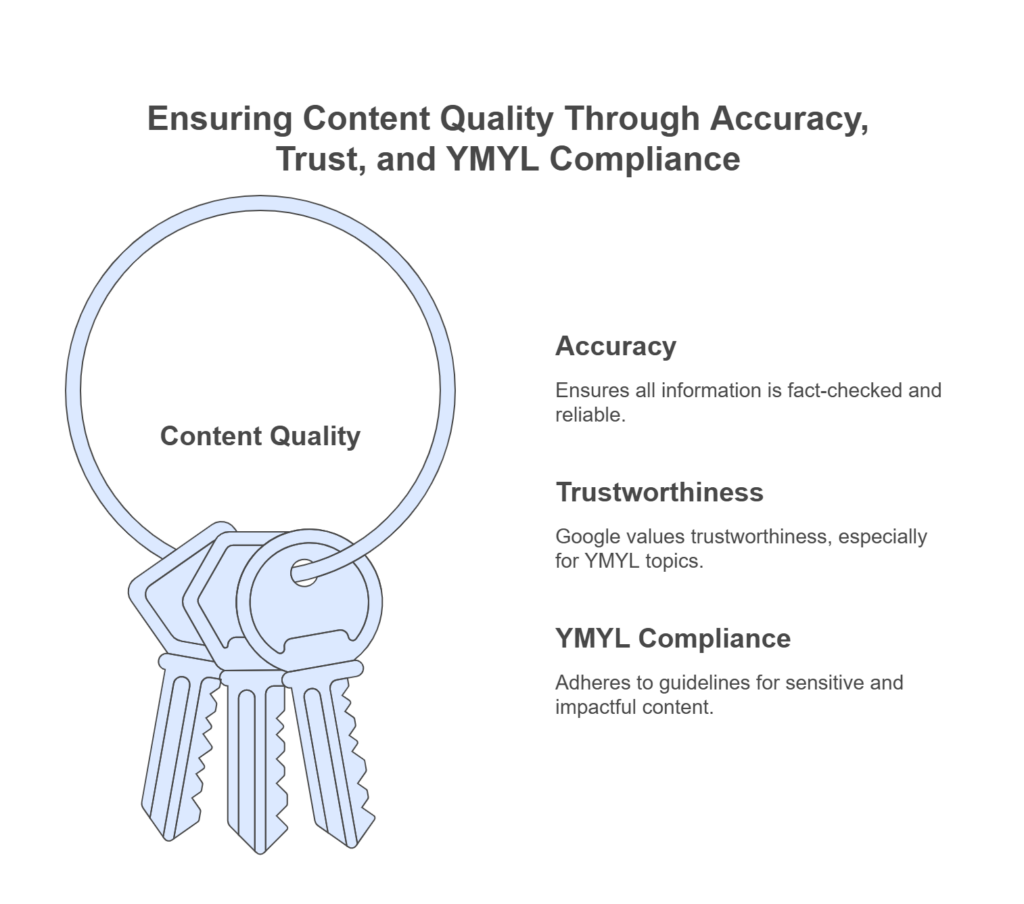
14. Topic Relevance
- What It Is: Stay focused on the topic without irrelevant tangents.
- Why It Matters: Relevant content matches user expectations, improving engagement metrics like time on page.
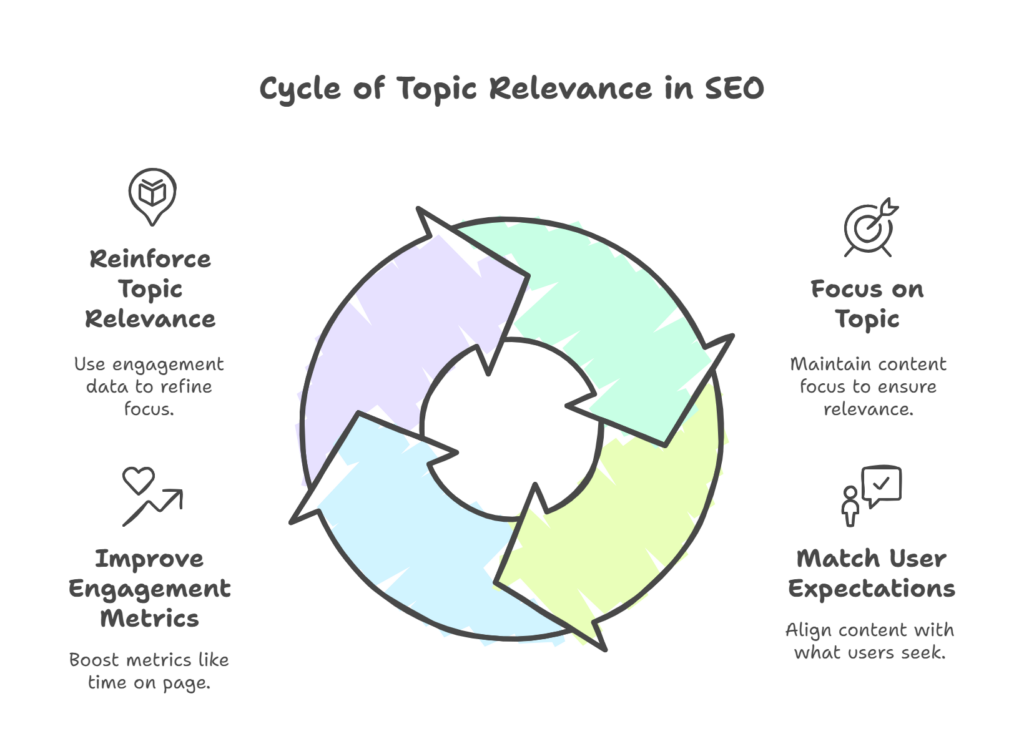
15. Semantic Keywords (LSI)
- What It Is: Use related terms and synonyms alongside your main keyword.
- Why It Matters: LSI keywords provide context, helping Google better understand your content’s topic.
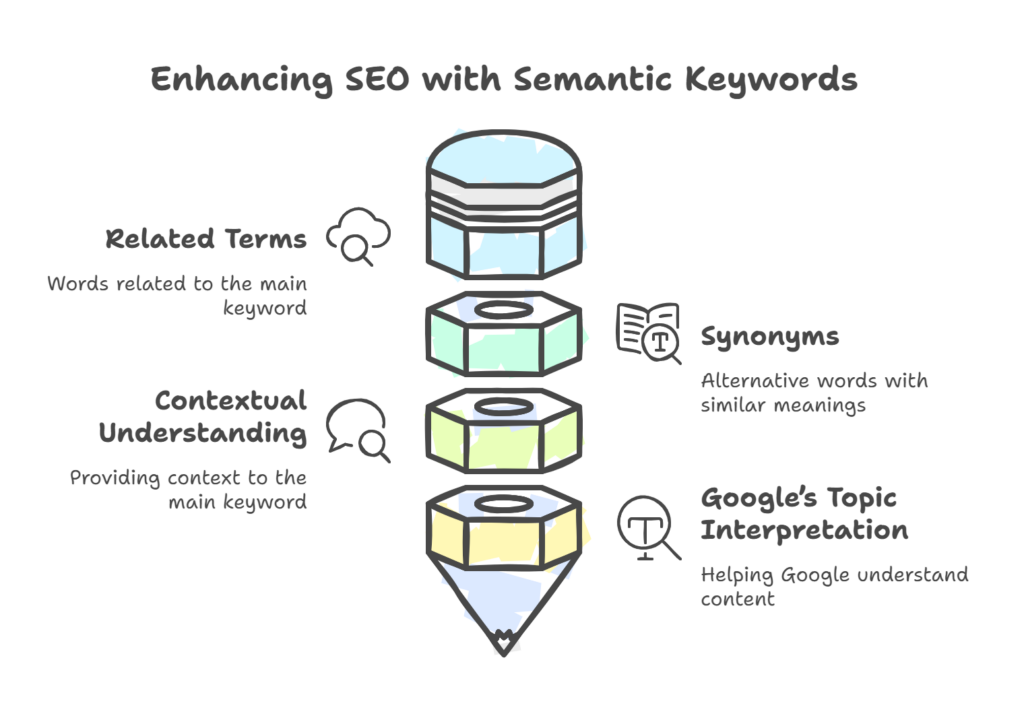
16. Logical Content Structure
- What It Is: Organize content with a clear flow using H2/H3 subheadings.
- Why It Matters: A structured layout improves user experience and helps Google crawl your content effectively.
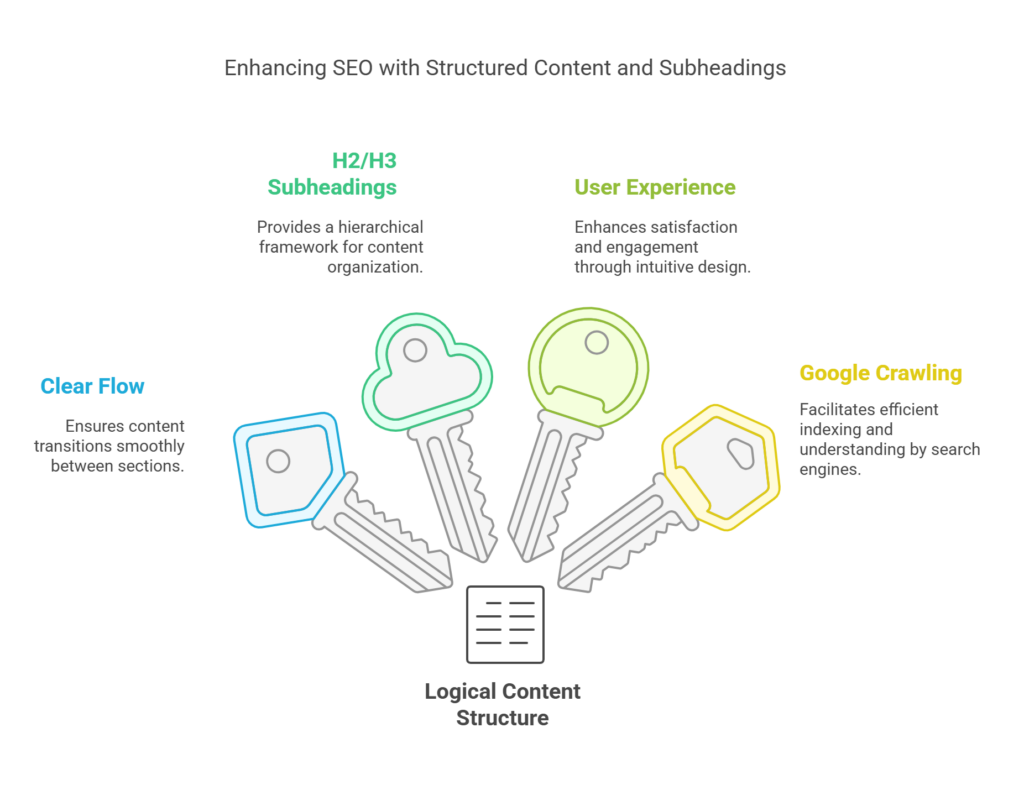
17. Authoritative Content Creators
- What It Is: Feature content is written by recognized experts.
- Why It Matters: Google’s E-E-A-T (Experience, Expertise, Authoritativeness, Trustworthiness) guidelines favor expert-authored content.
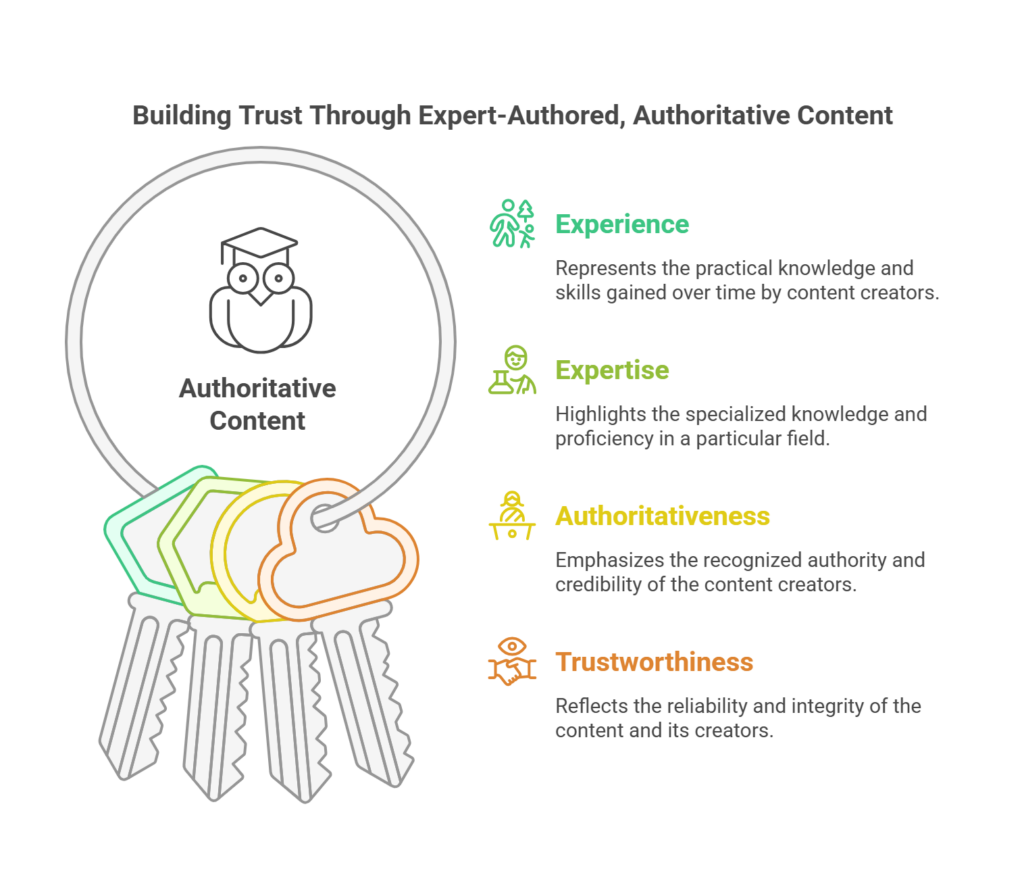
18. Evergreen Content Strategy
- What It Is: Create timeless content that remains relevant over time.
- Why It Matters: Evergreen content sustains long-term traffic and rankings with periodic updates.
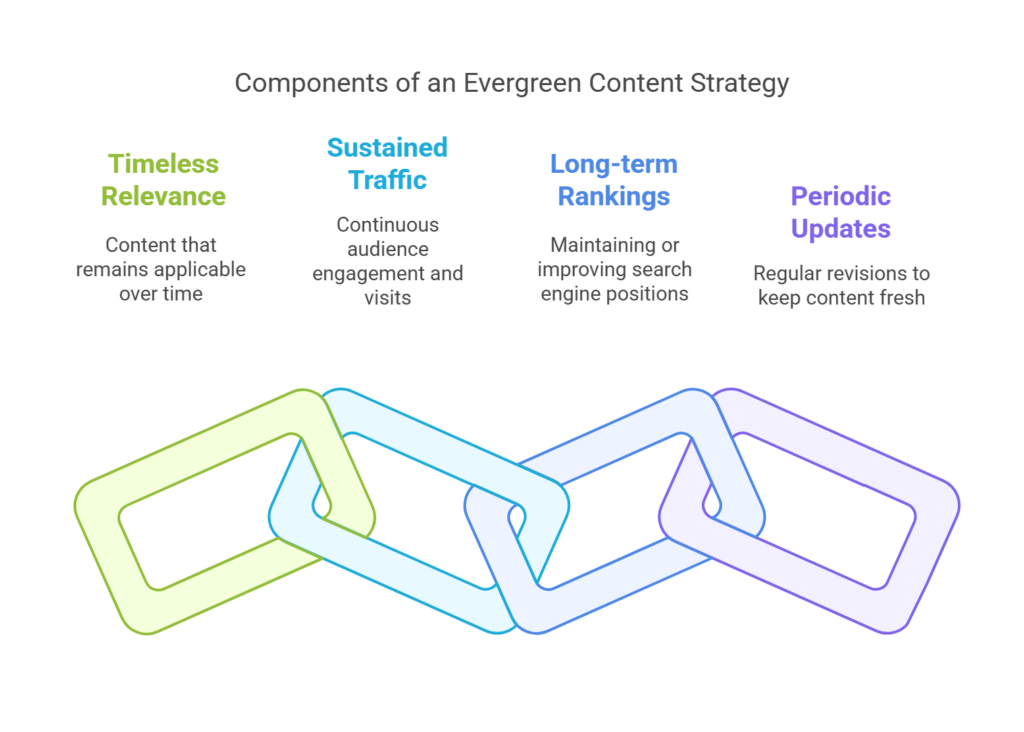
19. Social Sharing Potential
- What It Is: Encourage social media shares with share buttons.
- Why It Matters: While not a direct ranking factor, shares increase visibility, driving traffic and potential backlinks.
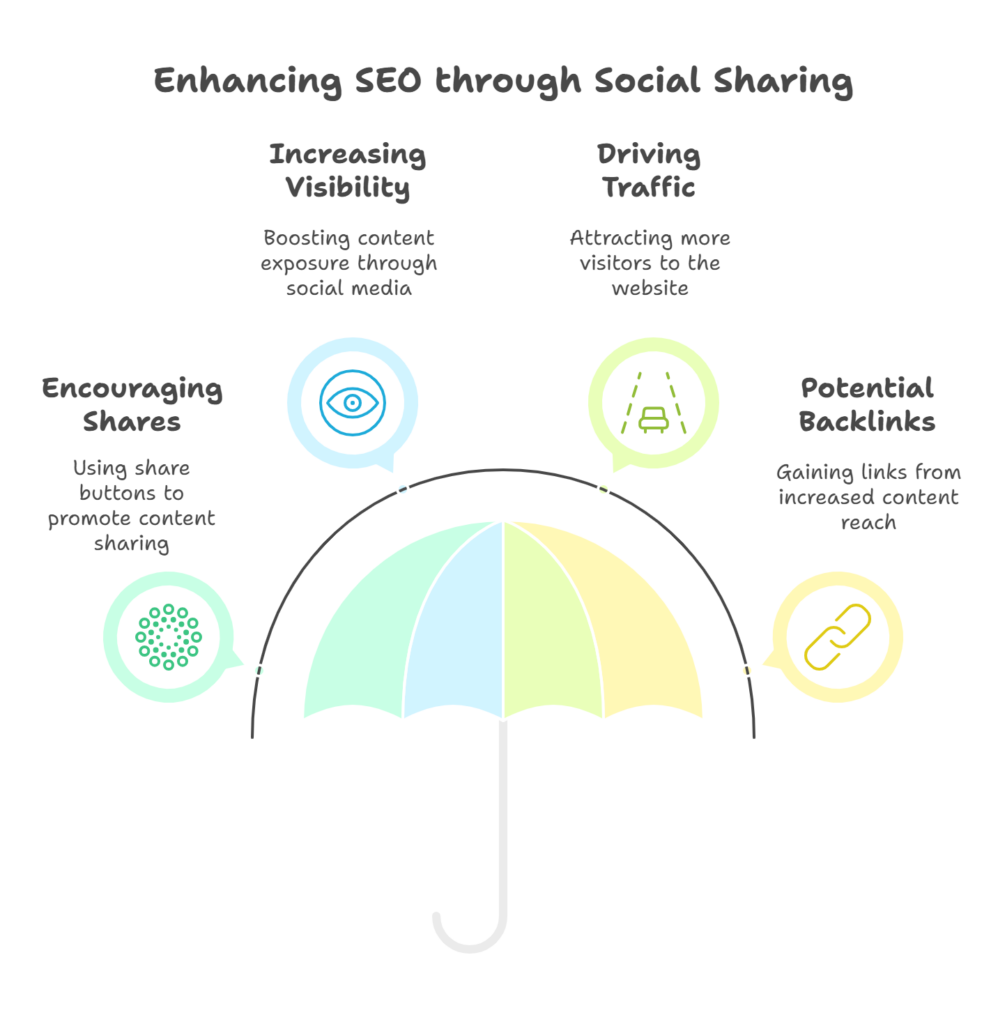
20. Consistent Publishing Schedule
- What It Is: Post new content regularly (e.g., weekly or biweekly).
- Why It Matters: Consistency signals an active site to Google, improving crawl frequency and indexing.
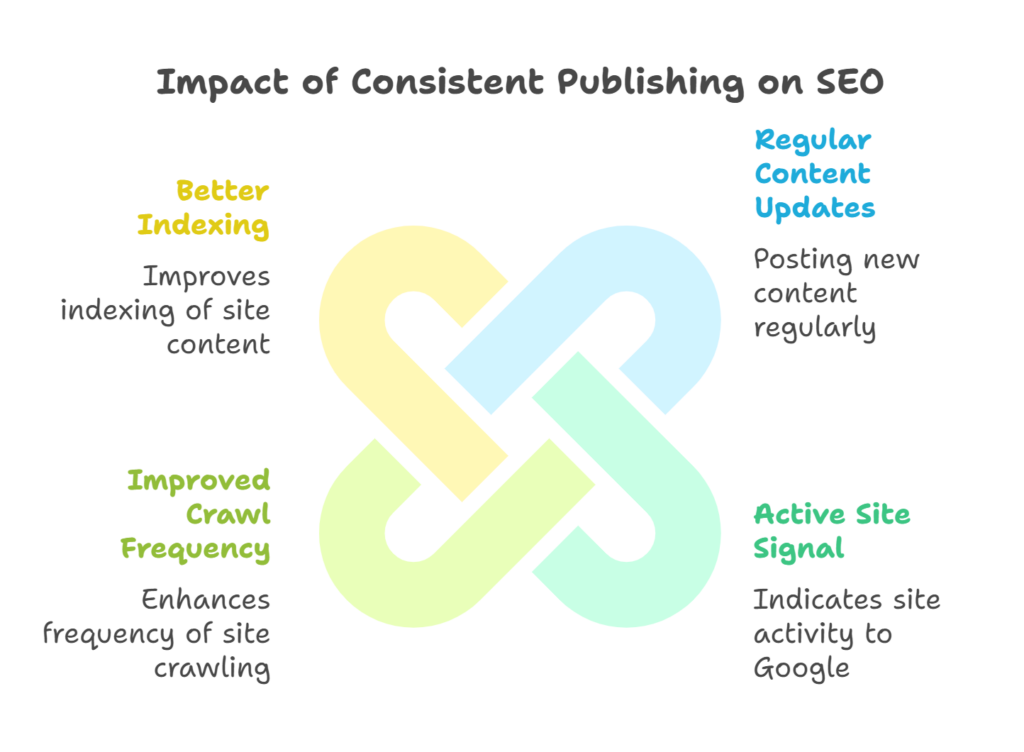
Section 2: Technical SEO Foundations (Factors 21-40)
Technical SEO ensures your site is accessible and optimized for Google’s bots.
21. Page Load Speed Optimization
- What It Is: Ensure your site loads quickly on all devices.
- Why It Matters: Speed is a ranking factor; faster pages improve user experience and reduce bounce rates.
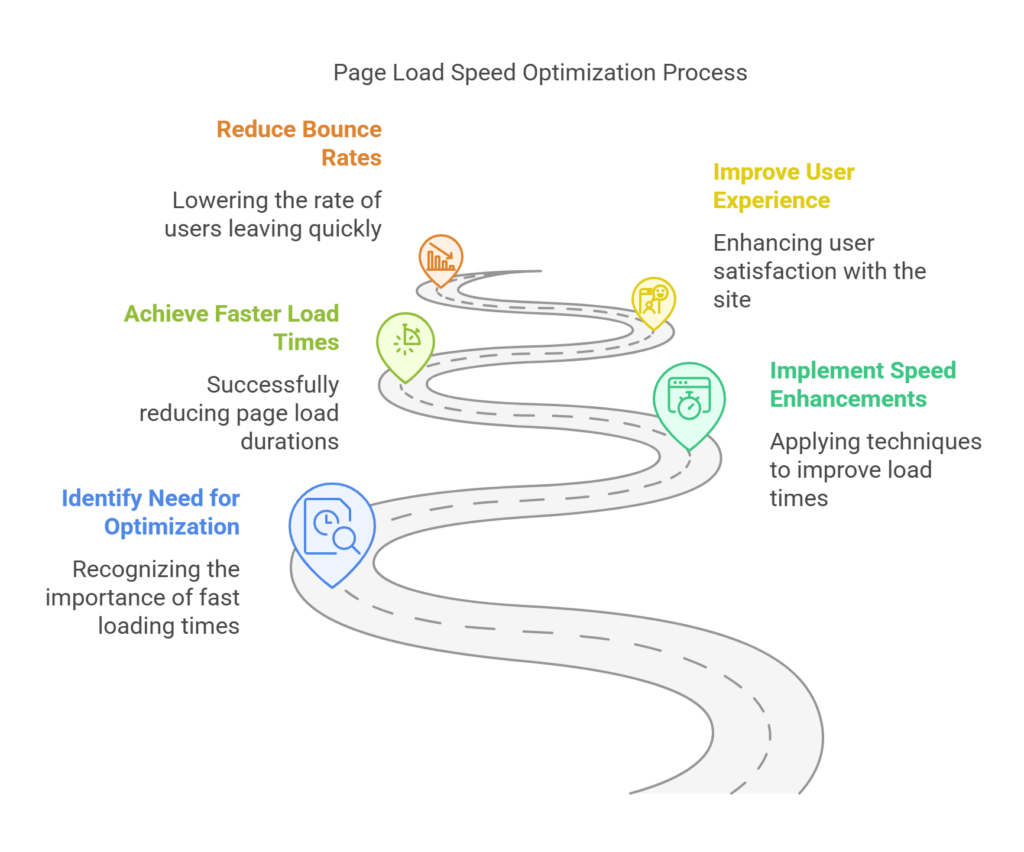
22. Mobile-Responsive Design
- What It Is: Make your site fully functional on mobile devices.
- Why It Matters: Google uses mobile-first indexing, prioritizing mobile-friendly sites for rankings.
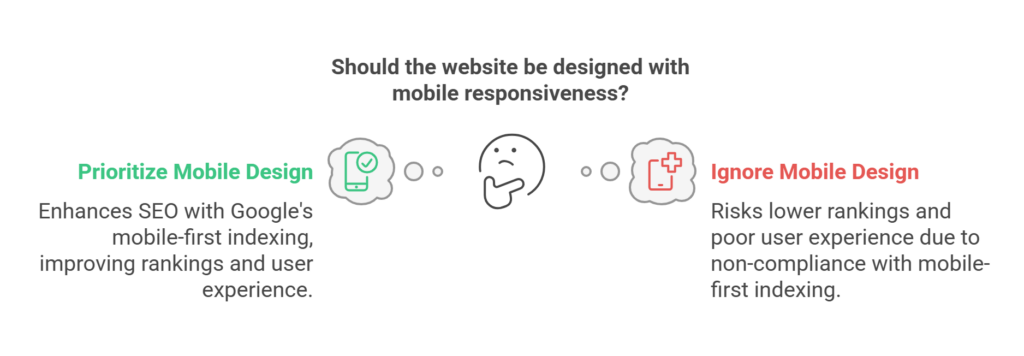
23. HTTPS Security Protocol
- What It Is: Secure your site with an HTTPS certificate.
- Why It Matters: HTTPS is a trust signal for Google, enhancing user safety and rankings.
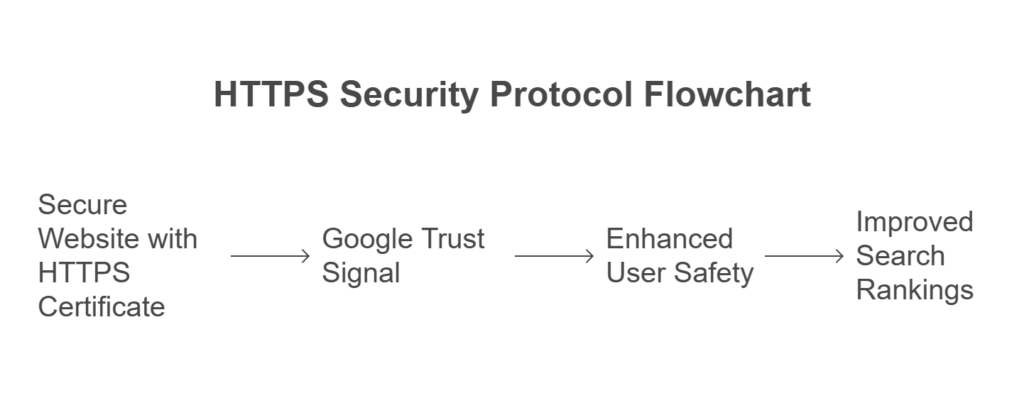
24. Clean URL Structure
- What It Is: Use short, descriptive URLs with keywords.
- Why It Matters: Simple URLs are easier for Google to crawl and for users to understand.

25. XML Sitemap Submission
- What It Is: Create and submit an XML sitemap to Google.
- Why It Matters: Sitemaps help Google discover and index all your pages efficiently.
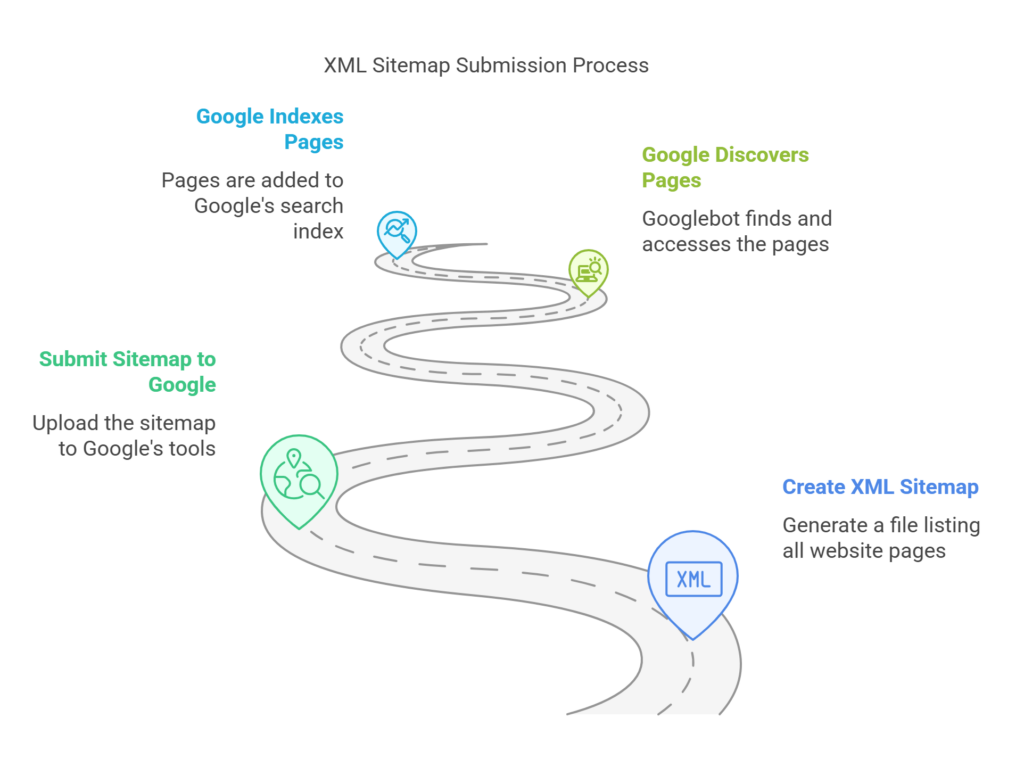
26. Proper Robots.txt Configuration
- What It Is: Use a robots.txt file to guide Google’s crawlers.
- Why It Matters: Correct settings prevent Google from crawling irrelevant pages, saving crawl budget.
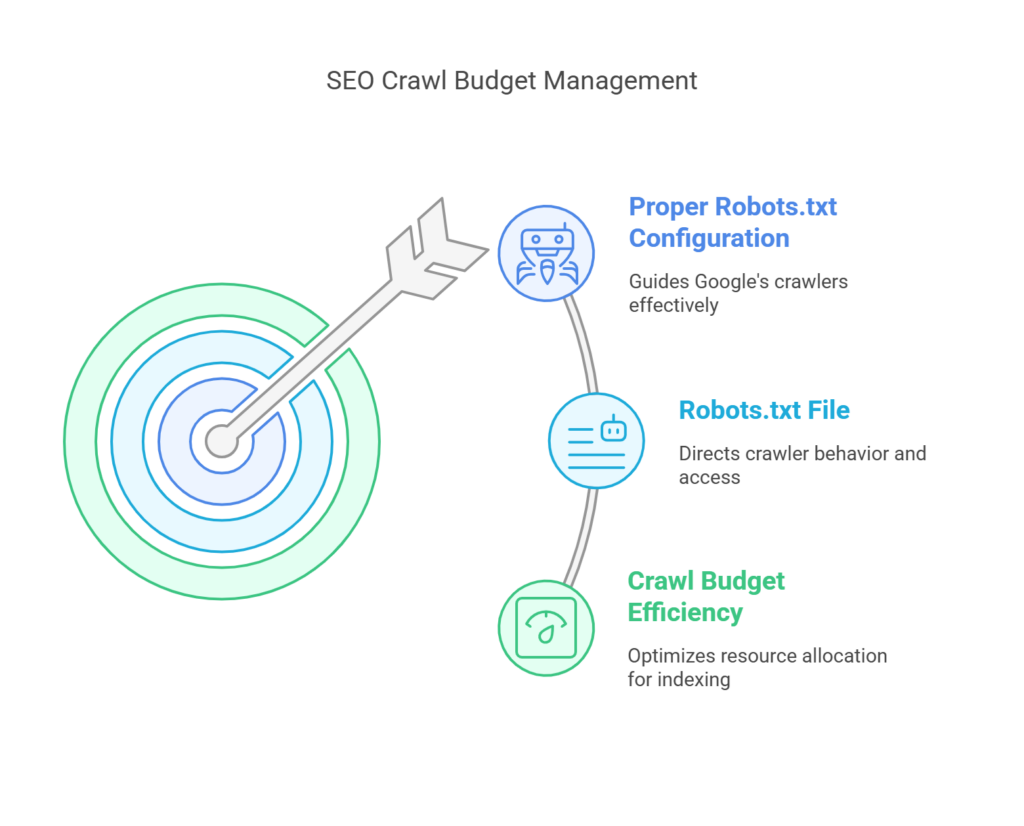
27. No Duplicate Content Issues
- What It Is: Avoid duplicate content across your site.
- Why It Matters: Duplicates confuse Google, potentially diluting your rankings; use canonical tags to fix.
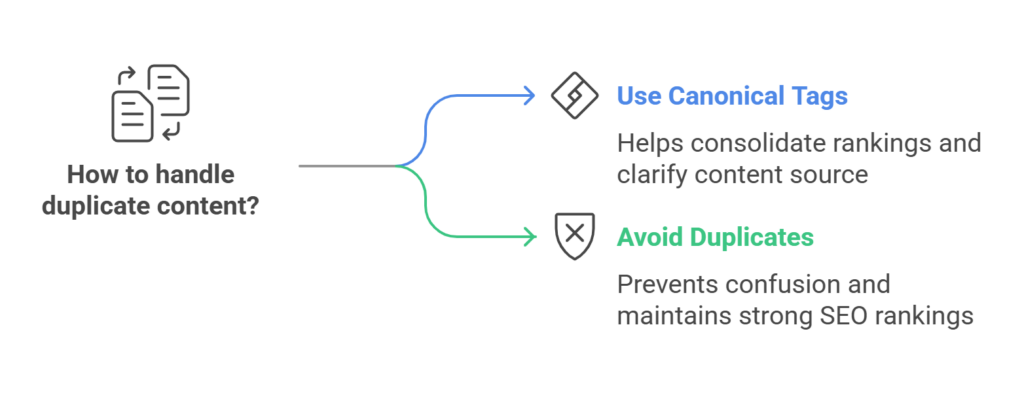
28. Core Web Vitals Compliance
- What It Is: Optimize for metrics like LCP, FID, and CLS.
- Why It Matters: Core Web Vitals measure user experience, directly impacting rankings.
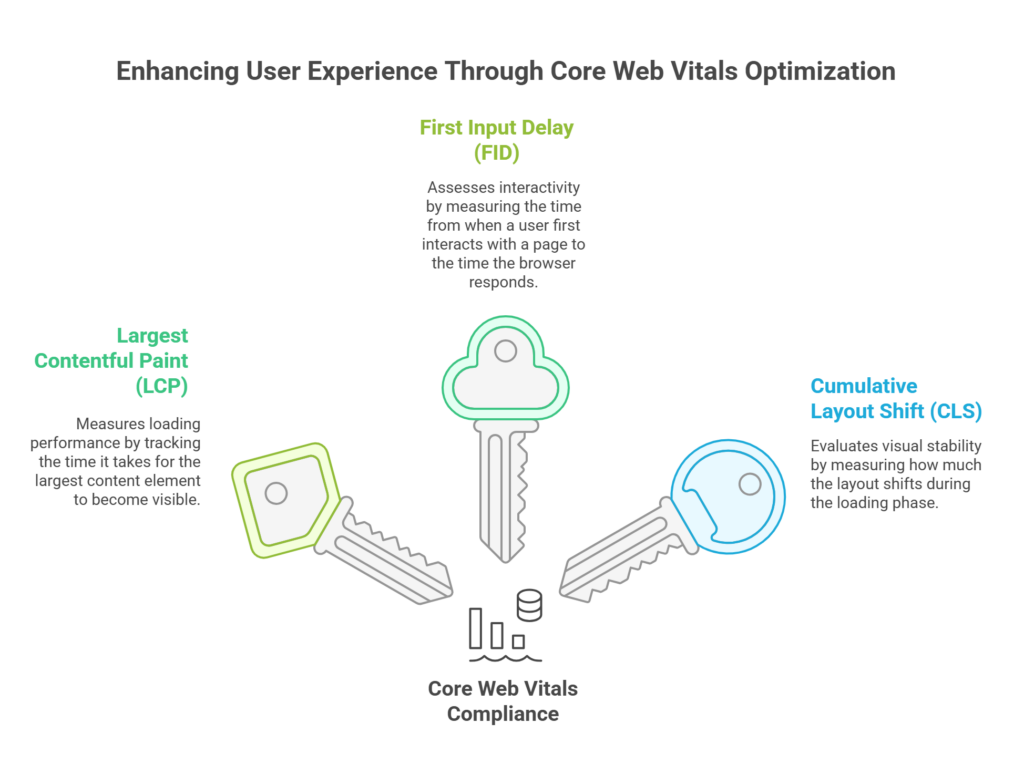
29. Structured Data Markup
- What It Is: Implement schema markup (e.g., for FAQs, and reviews).
- Why It Matters: Structured data enhances SERP visibility with rich snippets, increasing click-through rates.

30. Noindex for Low-Value Pages
- What It Is: Use noindex tags on thin or irrelevant pages.
- Why It Matters: This prevents Google from indexing low-quality pages, focusing on high-value content.
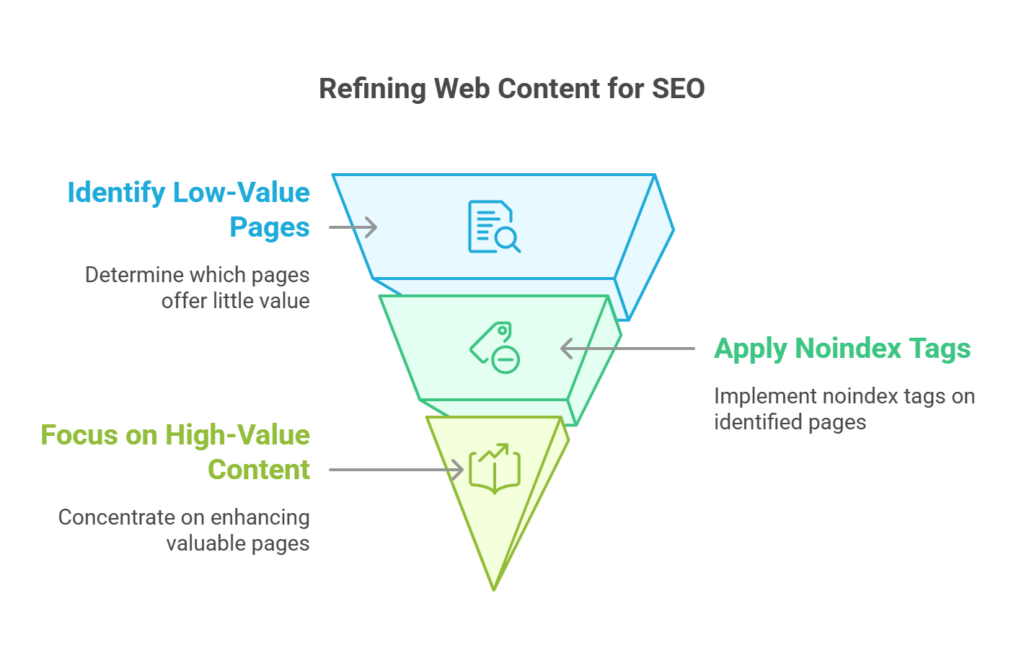
31. Canonical Tags for Duplicates
- What It Is: Apply canonical tags to duplicate pages.
- Why It Matters: Canonical tags tell Google which version to index, avoiding duplicate content penalties.
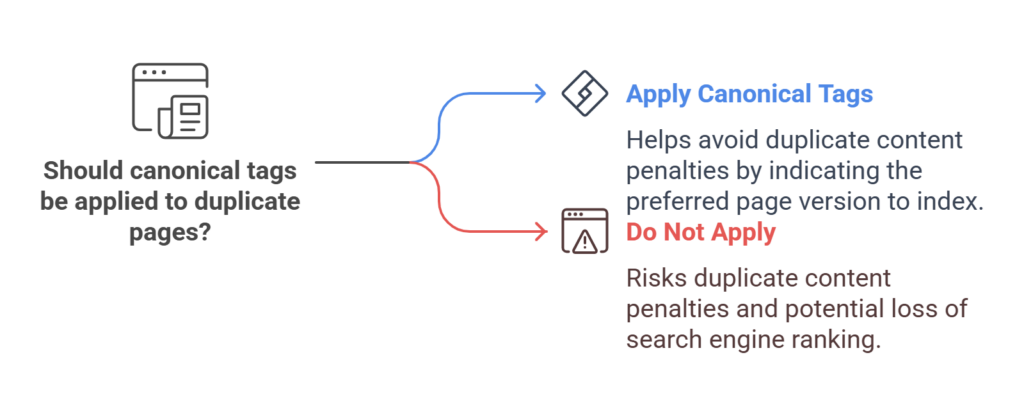
32. Fast Server Response Time
- What It Is: Choose a reliable hosting provider for quick responses.
- Why It Matters: Slow server times delay page loading, harming user experience and rankings.

33. Image Optimization
- What It Is: Compress images and use descriptive alt text.
- Why It Matters: Optimized images improve load speed and accessibility, enhancing overall SEO.
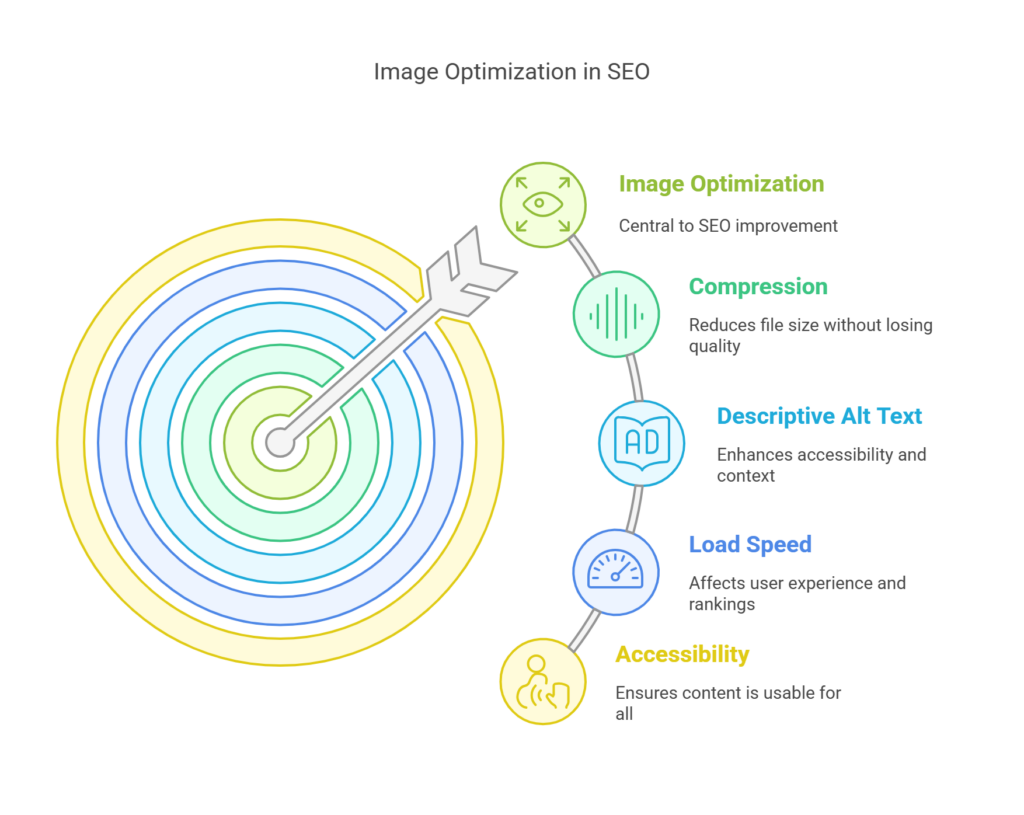
34. Breadcrumb Navigation
- What It Is: Add breadcrumb trails for easy navigation.
- Why It Matters: Breadcrumbs improve user experience and help Google understand site structure.
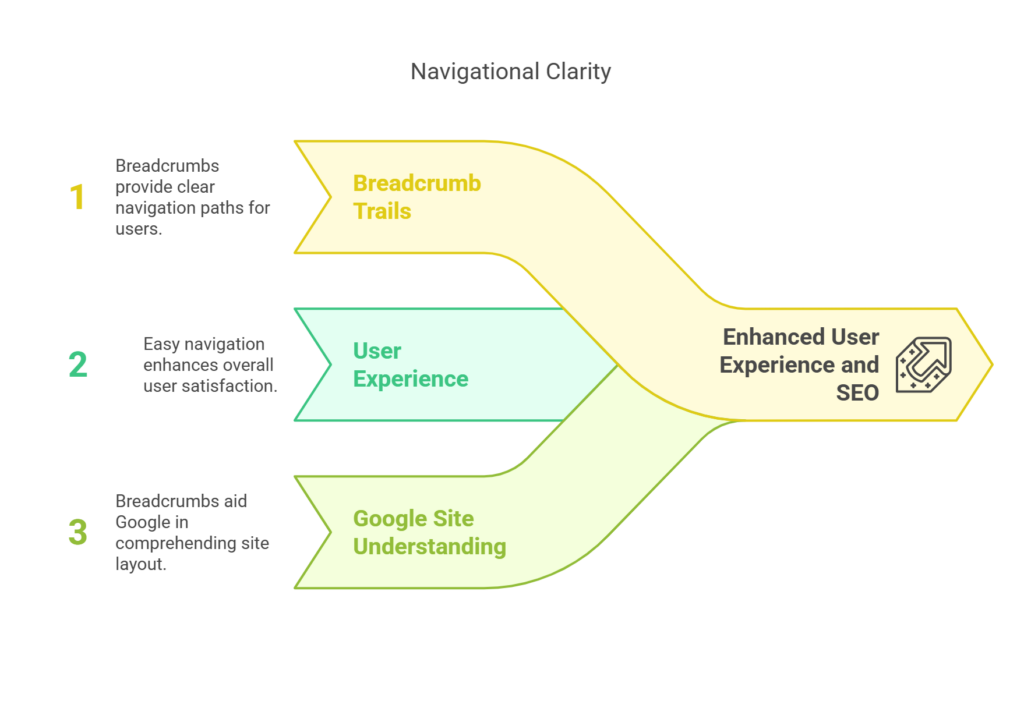
35. 404 Error Management
- What It Is: Fix or redirect broken links (404 errors).
- Why It Matters: Broken links frustrate users and waste Google’s crawl budget, lowering rankings.
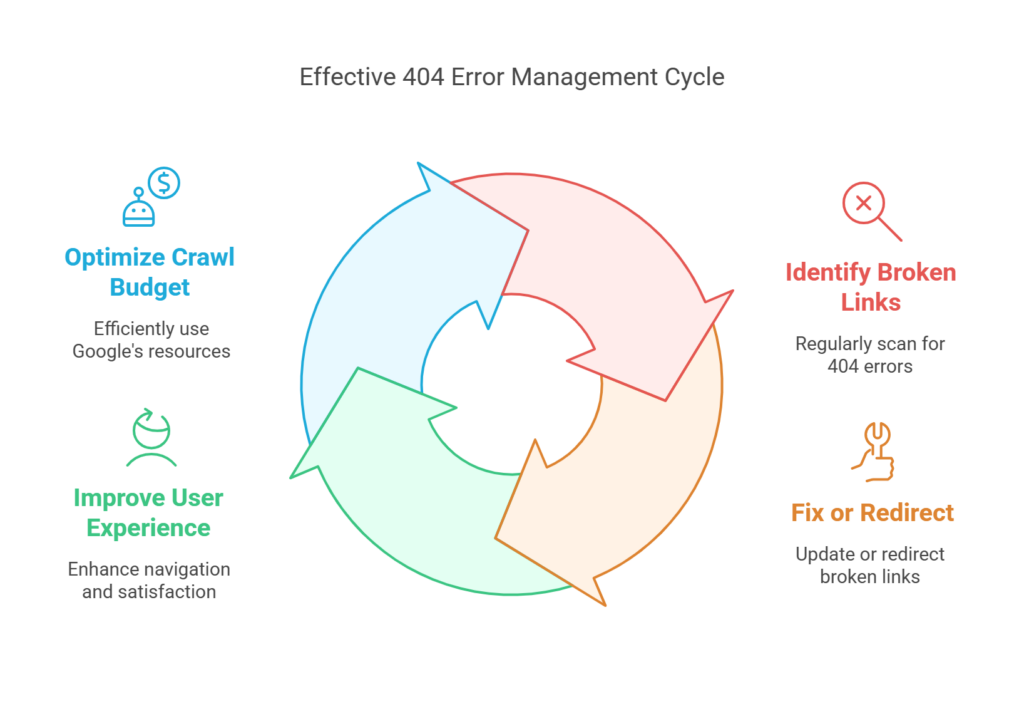
36. Proper Redirects (301)
- What It Is: Use 301 redirects for moved pages.
- Why It Matters: 301s pass link equity to new pages, preserving SEO value.
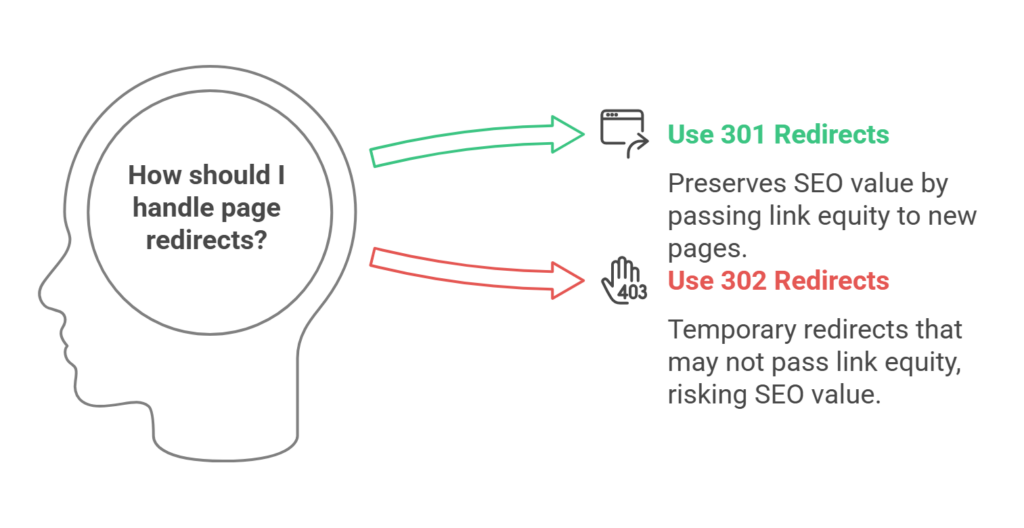
37. AMP Implementation (Optional)
- What It Is: Use Accelerated Mobile Pages for faster mobile loading.
- Why It Matters: AMP can improve mobile user experience, though its ranking impact varies.
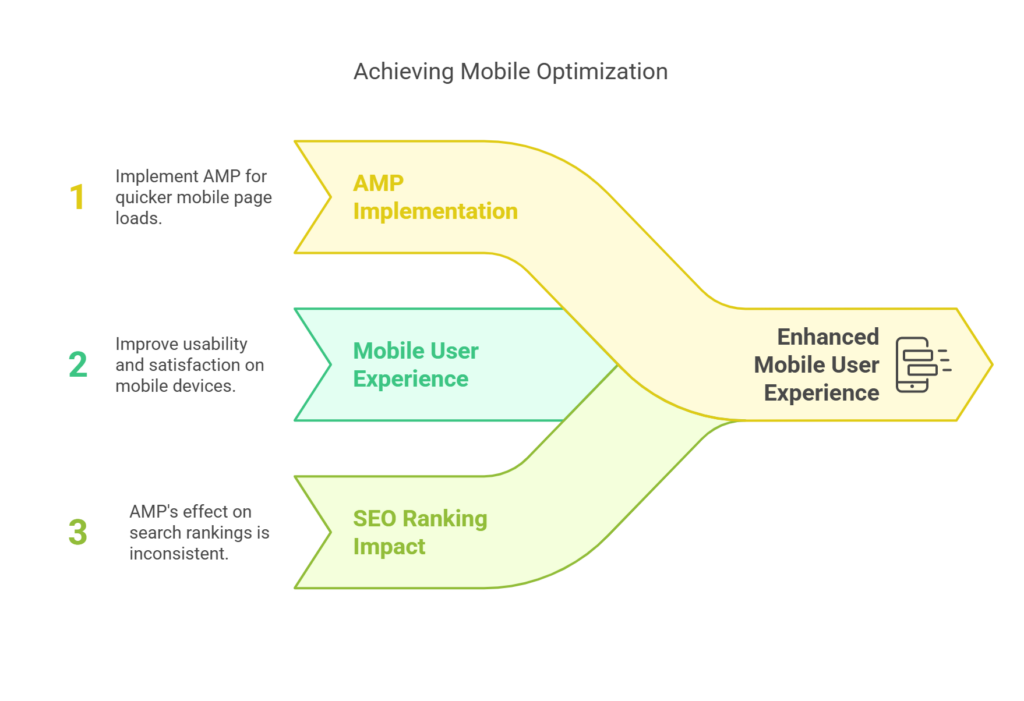
38. Crawlable Site Architecture
- What It Is: Ensure your site’s structure is easy for Google to crawl.
- Why It Matters: A flat architecture helps Google index your pages more effectively.
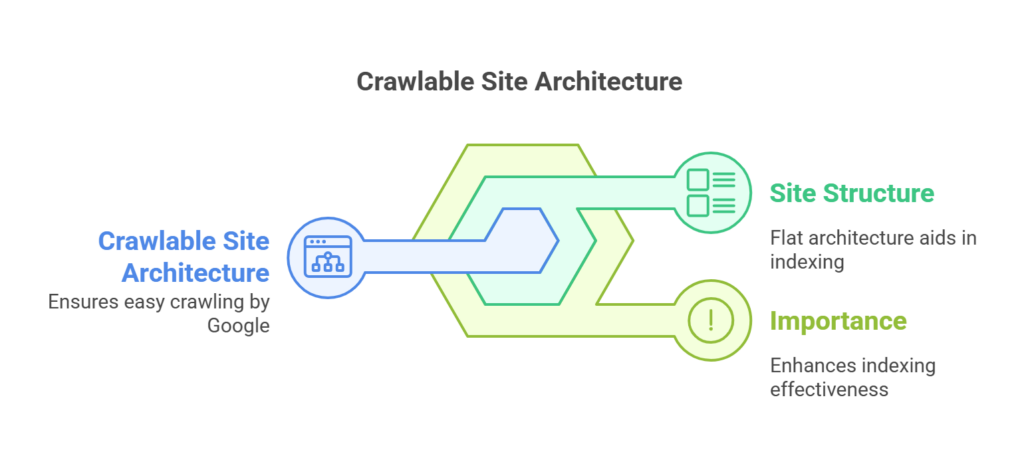
39. Avoid Thin Content
- What It Is: Eliminate pages with little to no value.
- Why It Matters: Thin content can lead to penalties, dragging down your site’s overall quality.
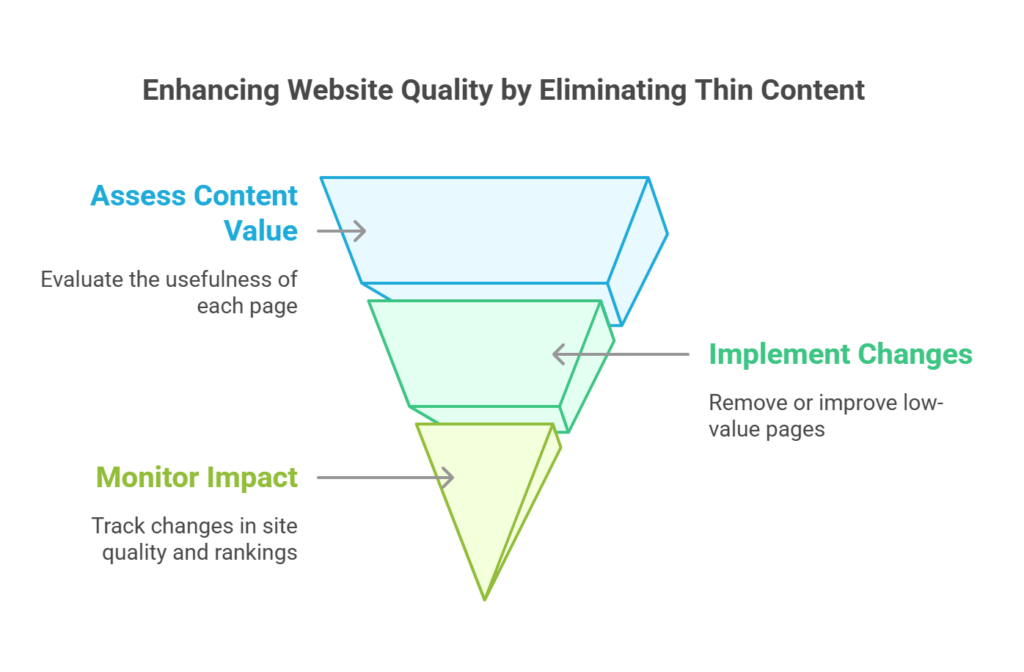
40. JavaScript Rendering
- What It Is: Ensure Google can render JavaScript-heavy pages.
- Why It Matters: If Google can’t render content, it may not index your pages correctly.
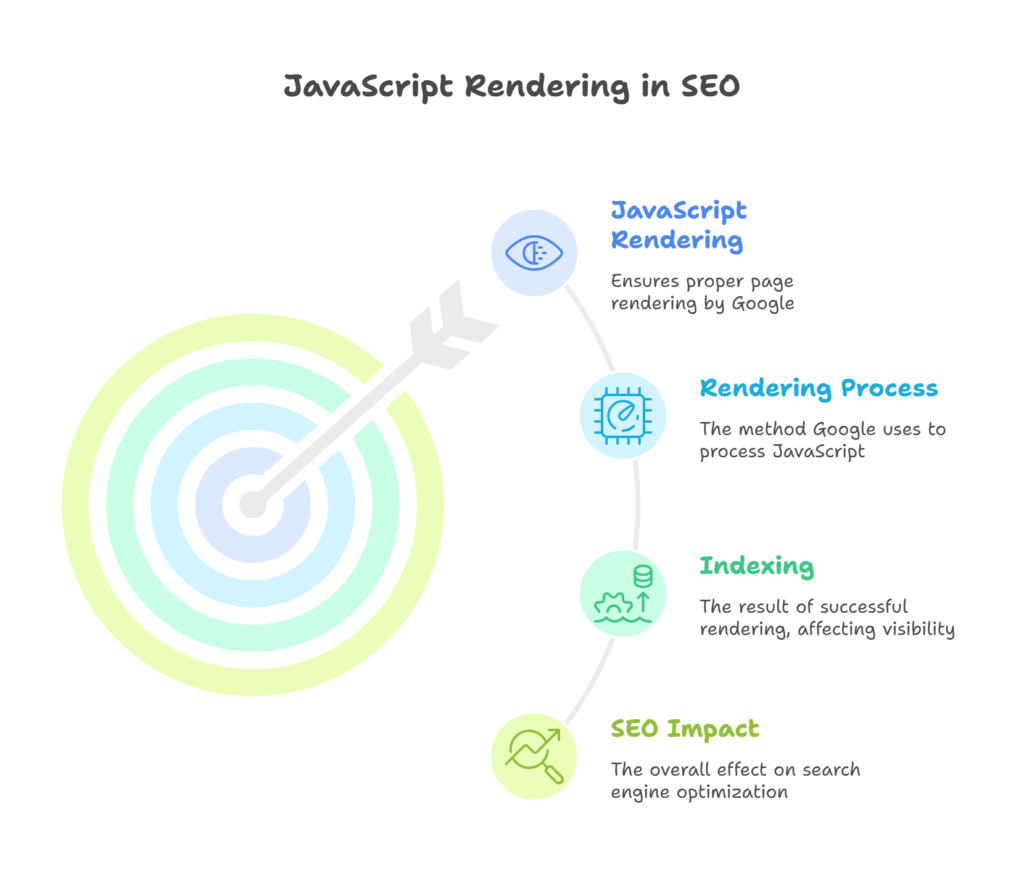
Section 3: On-Page SEO Optimization (Factors 41-50)
On-page elements help Google interpret your content’s relevance.
41. Keyword in Title Tag
- What It Is: Include your primary keyword in the title tag.
- Why It Matters: Title tags are a strong ranking signal, influencing click-through rates in SERPs
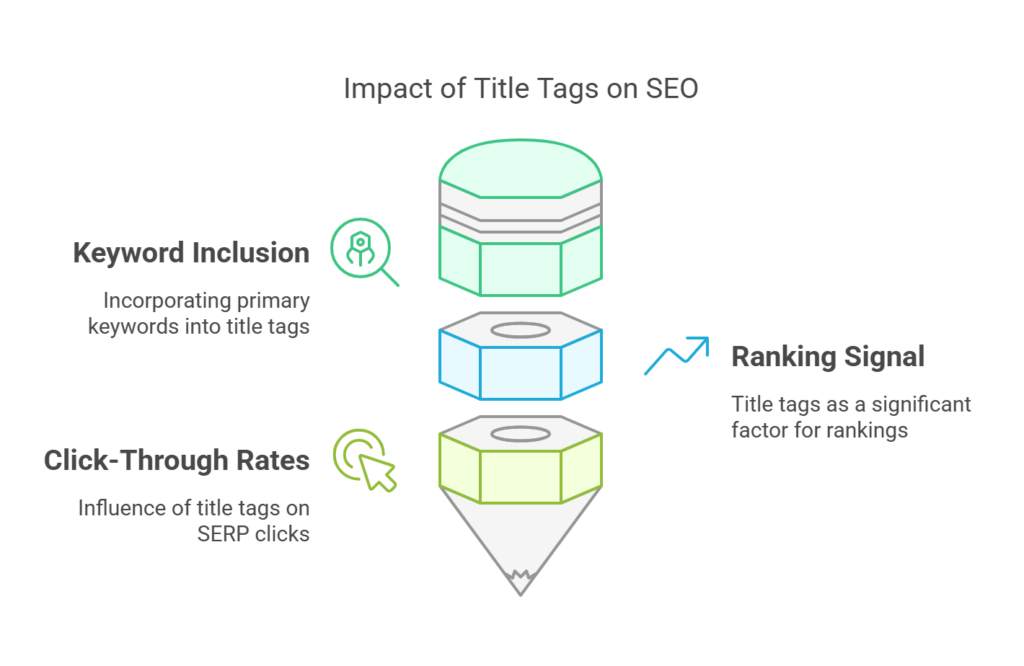
42. Keyword in Meta Description
- What It Is: Add your keyword to the meta description.
- Why It Matters: While not a direct ranking factor, it boosts relevance and click-through rates.
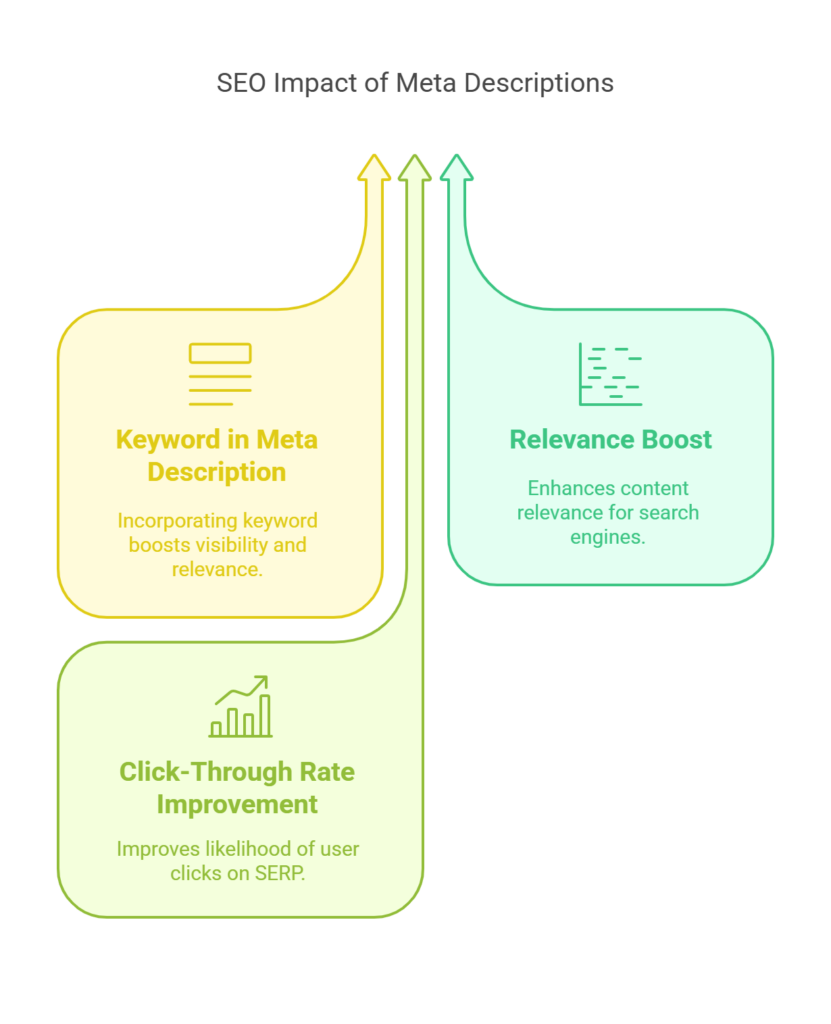
43. Keyword in First 100 Words
- What It Is: Place your keyword early in your content.
- Why It Matters: Early keyword placement signals topic relevance to Google.
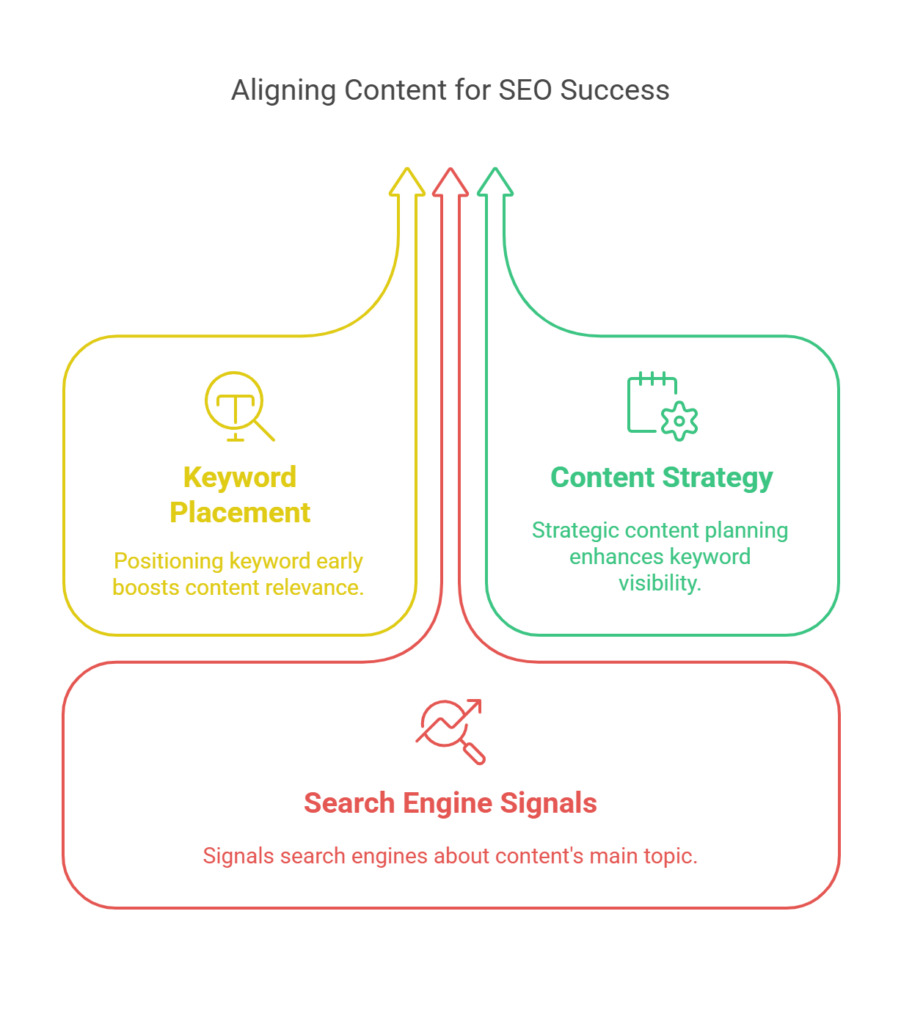
44. H2/H3 Tags with Keywords
- What It Is: Use keywords in subheadings (H2, H3).
- Why It Matters: Subheadings with keywords improve on-page structure and relevance.
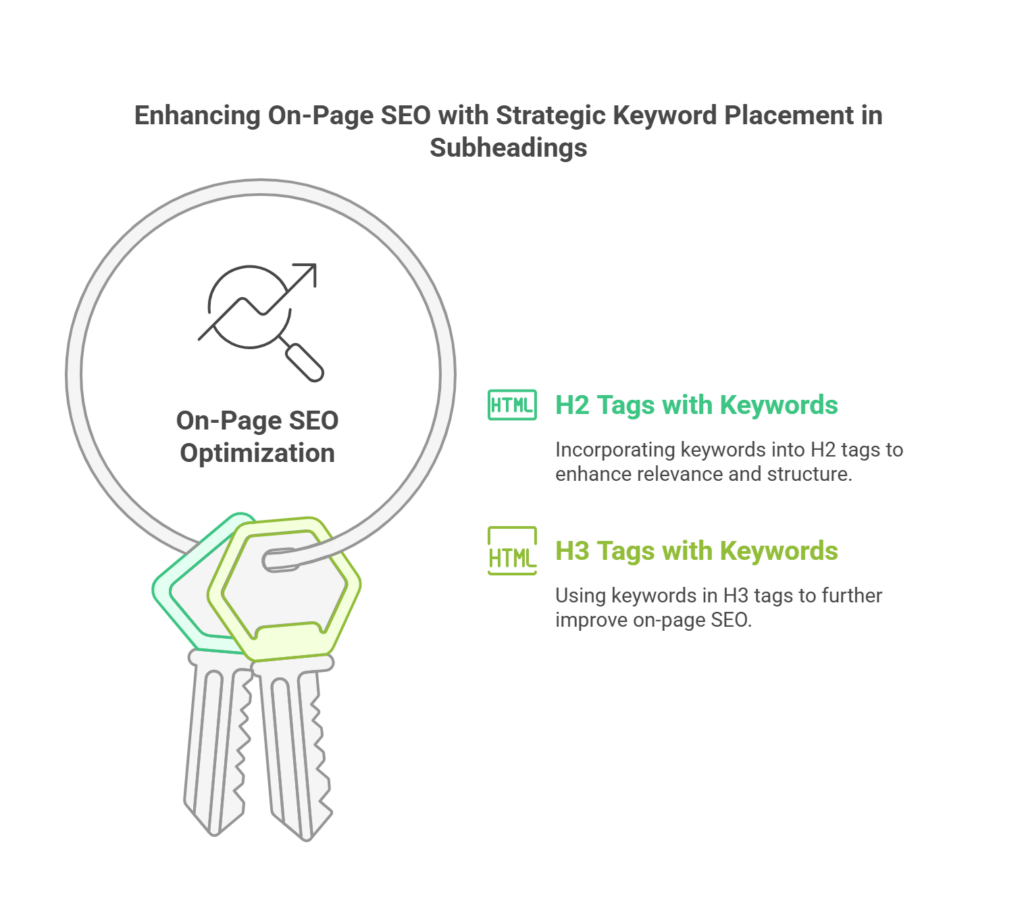
45. Avoid Keyword Stuffing
- What It Is: Don’t overuse keywords unnaturally.
- Why It Matters: Keyword stuffing triggers penalties, harming rankings and user experience.
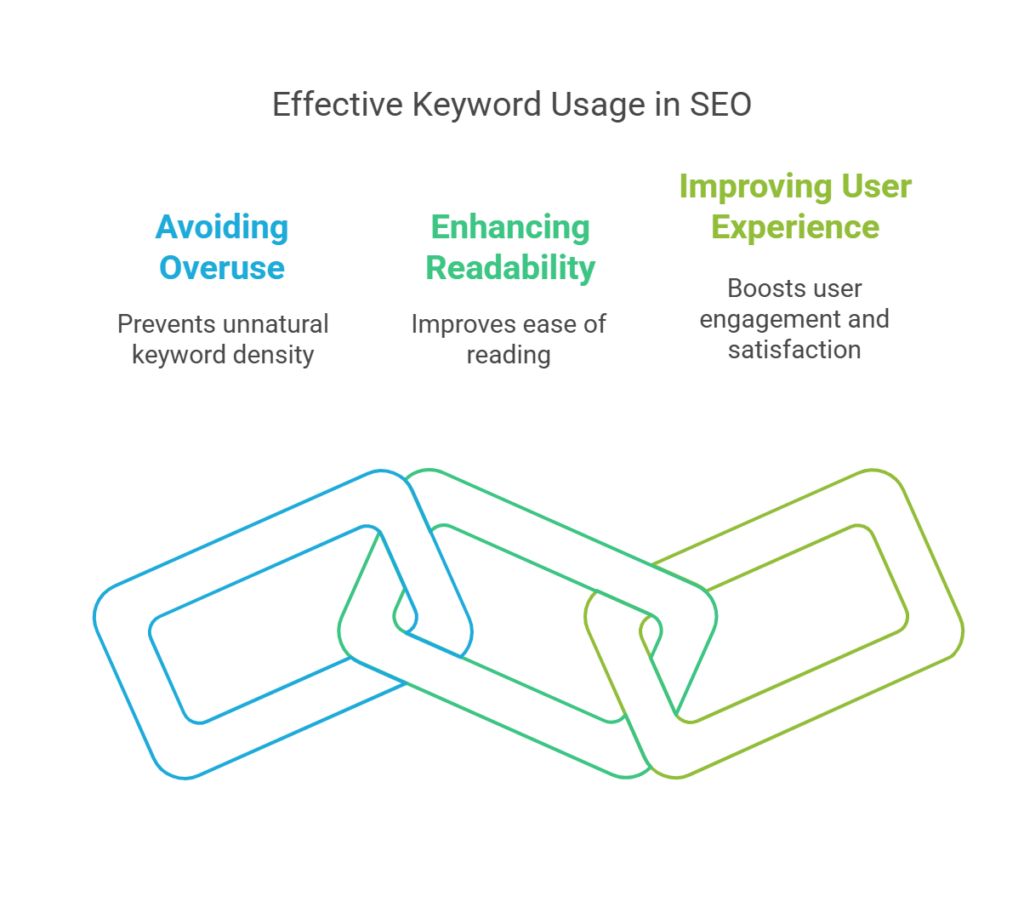
46. Descriptive Alt Text for Images
- What It Is: Add keyword-relevant alt text to images.
- Why It Matters: Alt text improves accessibility and helps Google understand image content.
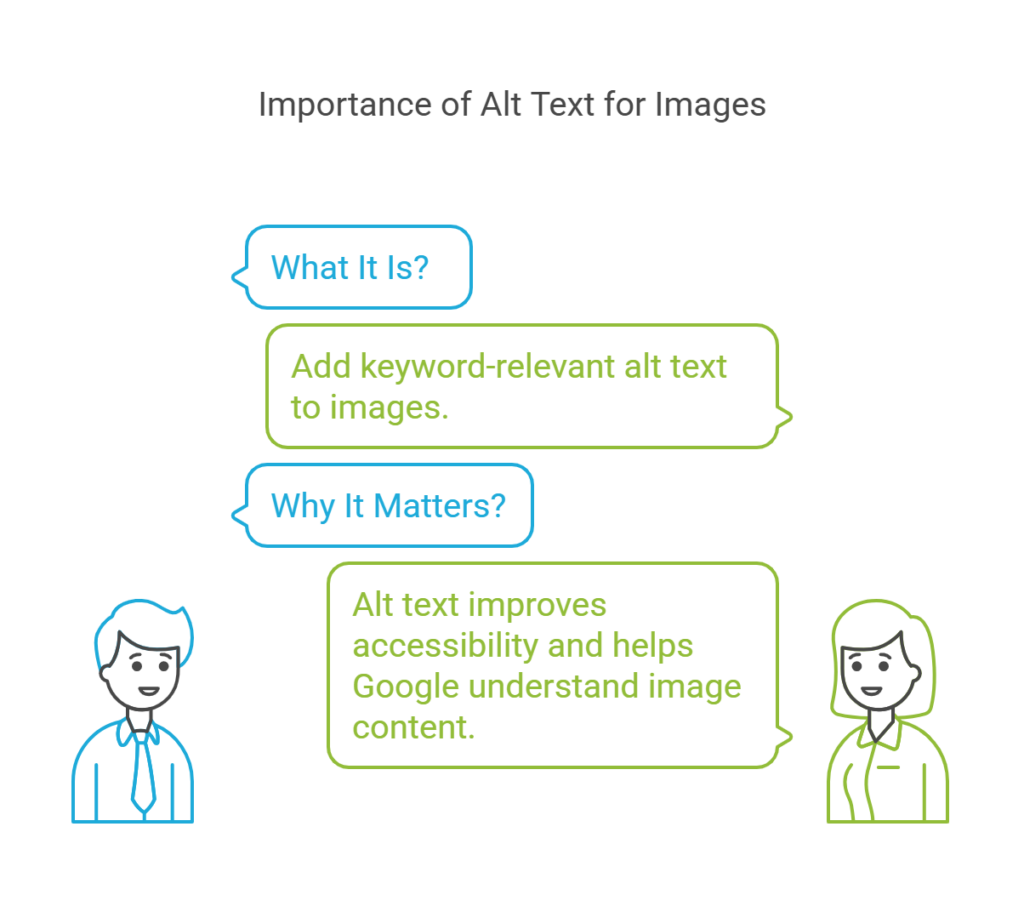
47. Outbound Links to Authority Sites
- What It Is: Link to reputable external sources.
- Why It Matters: Outbound links to trusted sites signal credibility to Google.
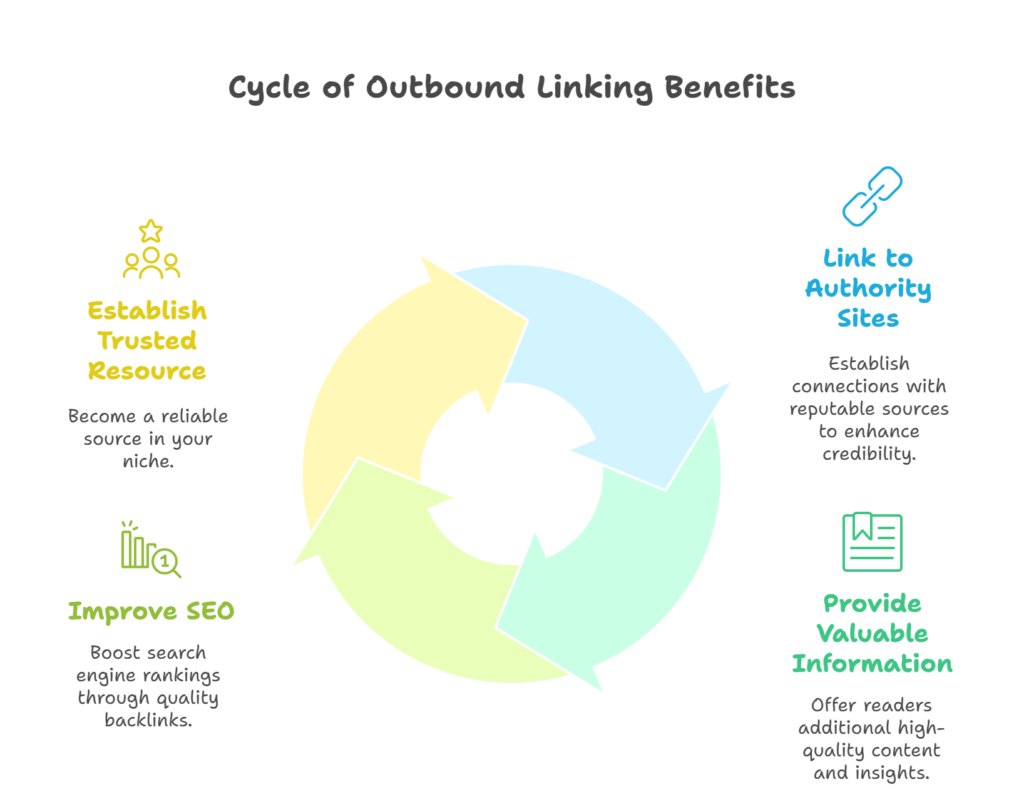
48. Page Title Length (Under 60 Characters)
- What It Is: Keep title tags under 60 characters.
- Why It Matters: Shorter titles display fully in SERPs, improving click-through rates.
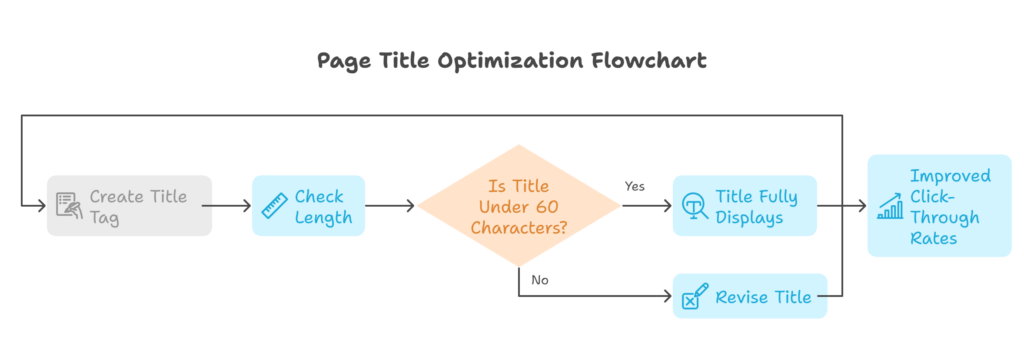
49. Meta Description Length (Under 160 Characters)
- What It Is: Limit meta descriptions to 160 characters.
- Why It Matters: Concise descriptions display properly, encouraging clicks without truncation.
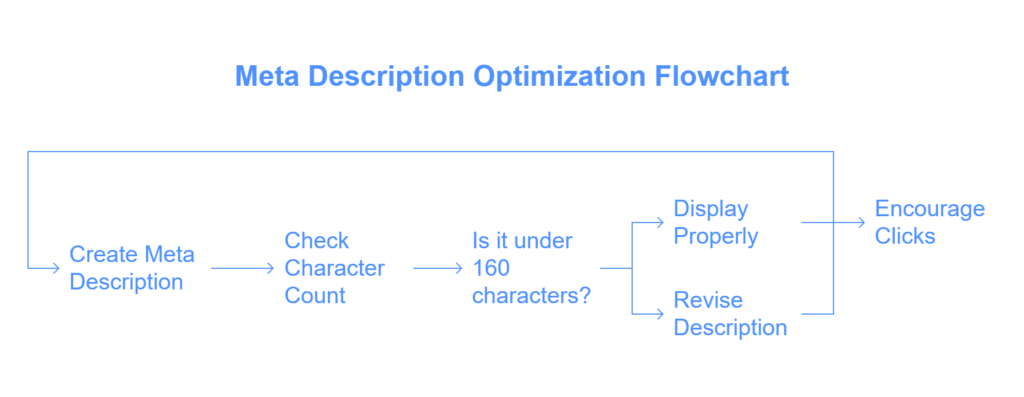
50. Keyword Density Balance
- What It Is: Use keywords naturally (1-2% density).
- Why It Matters: Balanced keyword use avoids penalties while maintaining relevance.

Section 4: Advanced Technical SEO (Factors 51-70)
Technical SEO goes beyond the basics to fine-tune your site for Google’s crawlers and users alike.
51. Avoid Hidden Content
- What It Is: Ensure important content isn’t hidden (e.g., in tabs or accordions).
- Why It Matters: Hidden content may not be indexed properly by Google, reducing its SEO impact.
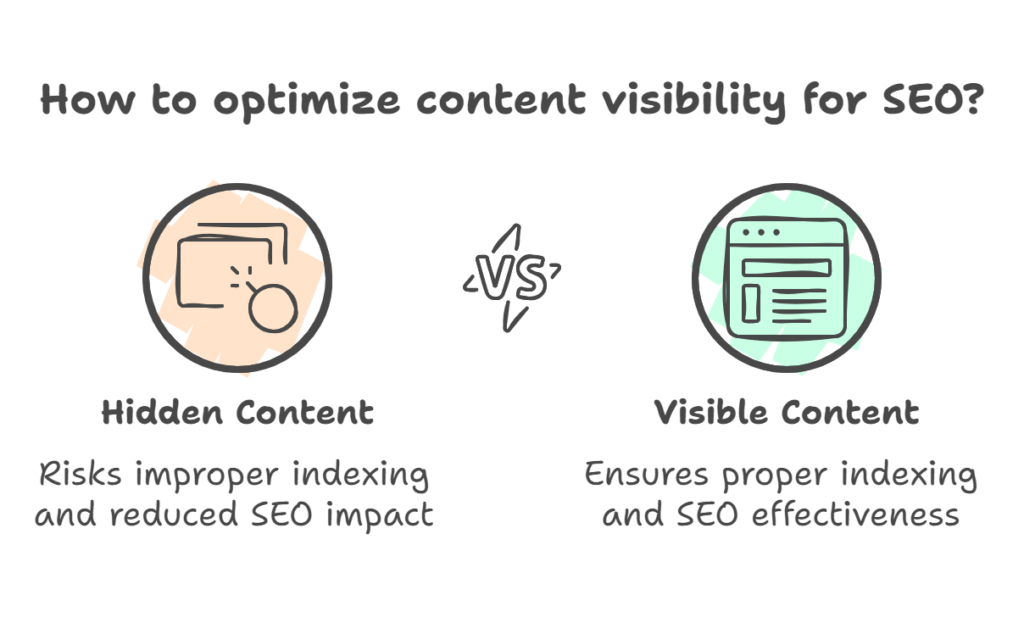
52. Proper Pagination Handling
- What It Is: Use rel=”next” and rel=”prev” tags for paginated content.
- Why It Matters: Pagination tags help Google understand multi-page content, preventing indexing issues.
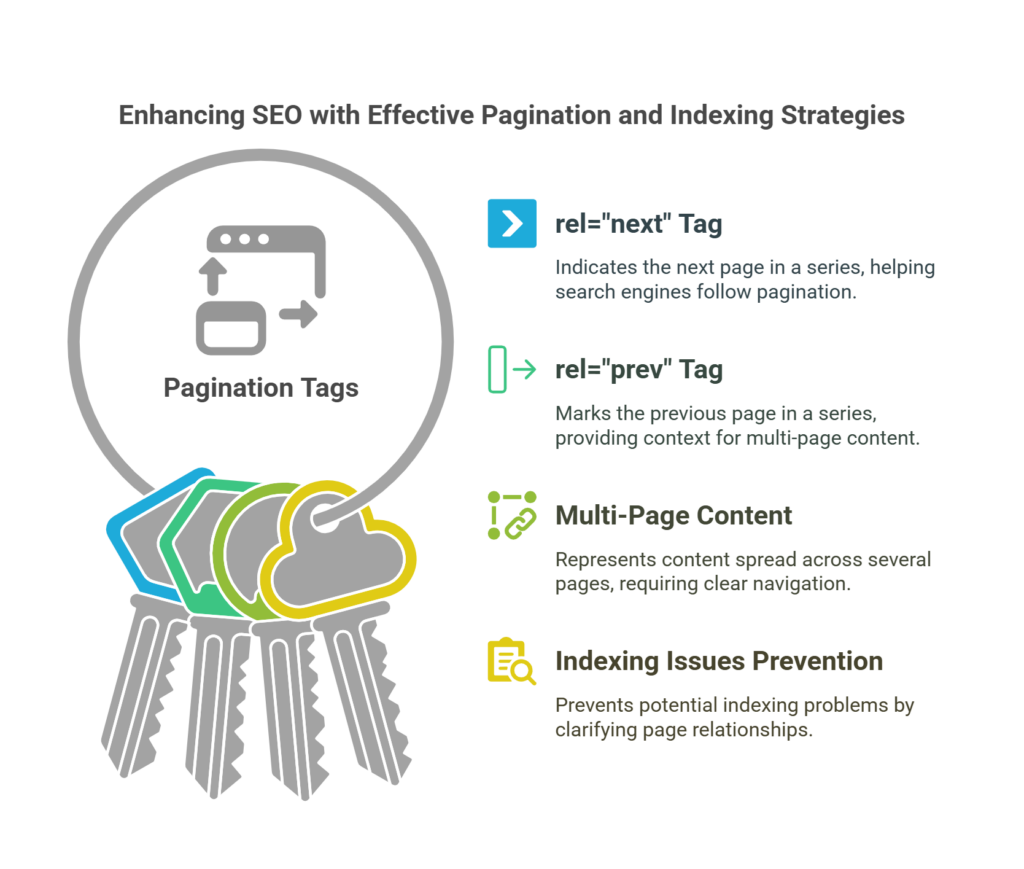
53. Optimized 404 Pages
- What It Is: Create user-friendly 404 pages with navigation links.
- Why It Matters: Helpful 404 pages keep users on your site, reducing bounce rates after errors.
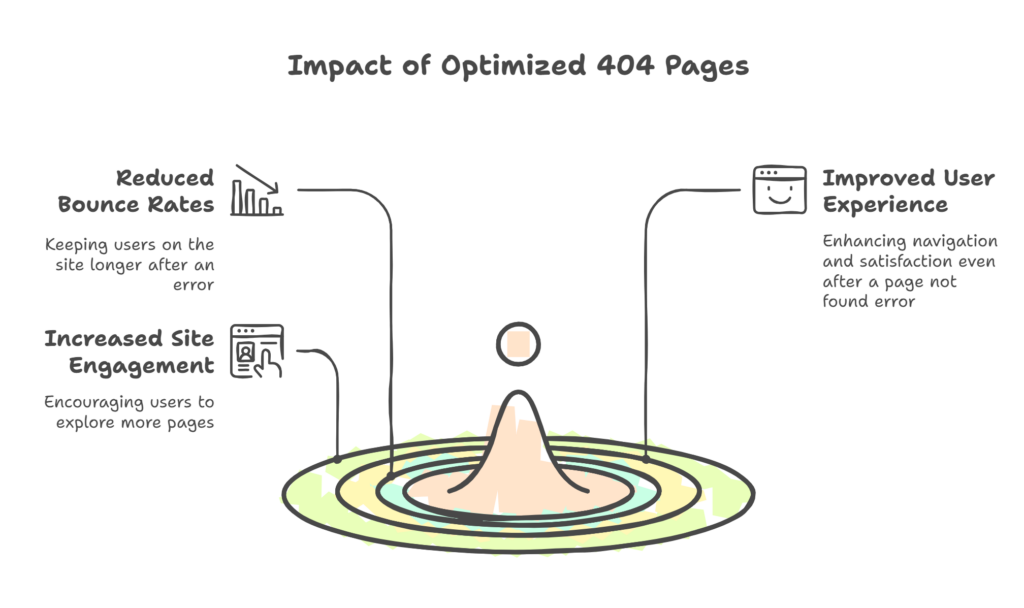
54. Hreflang for Multilingual Sites
- What It Is: Implement hreflang tags for sites with multiple languages.
- Why It Matters: Hreflang ensures Google serves the right language version to users, improving global SEO.
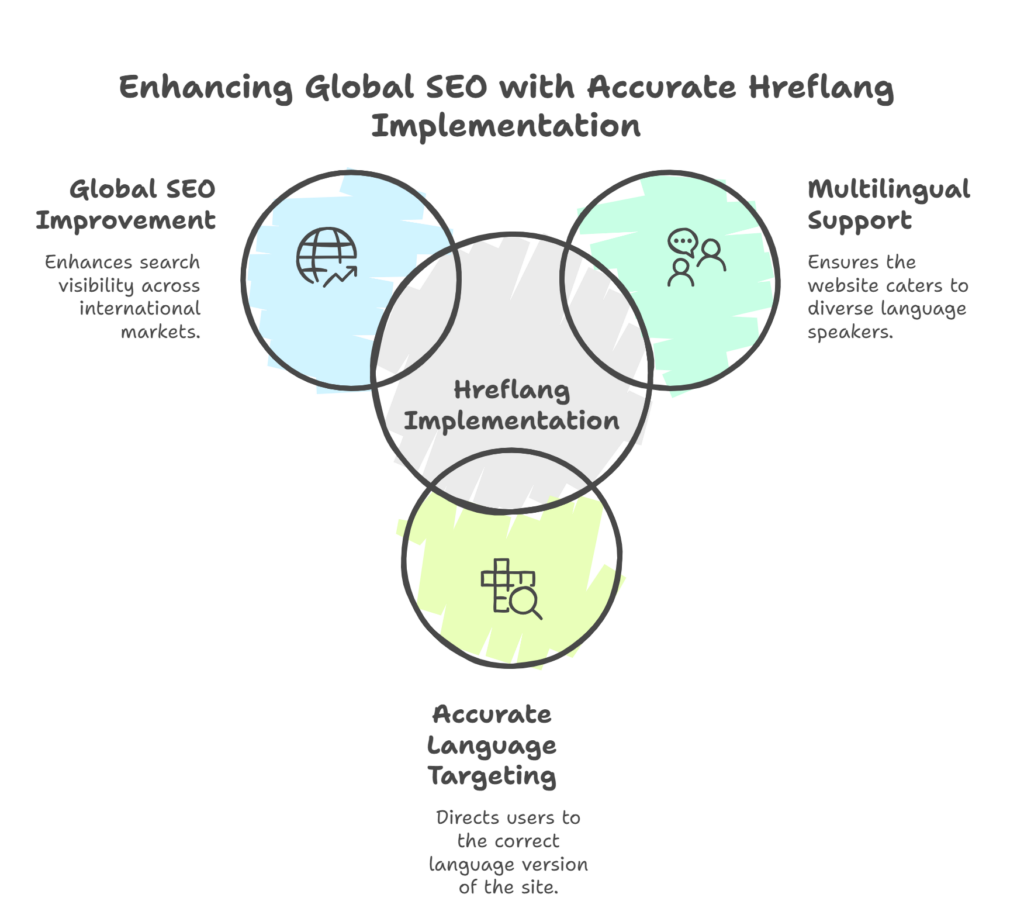
55. Avoid Intrusive Interstitials
- What It Is: Limit pop-ups that block content, especially on mobile.
- Why It Matters: Intrusive pop-ups harm user experience, potentially lowering rankings.
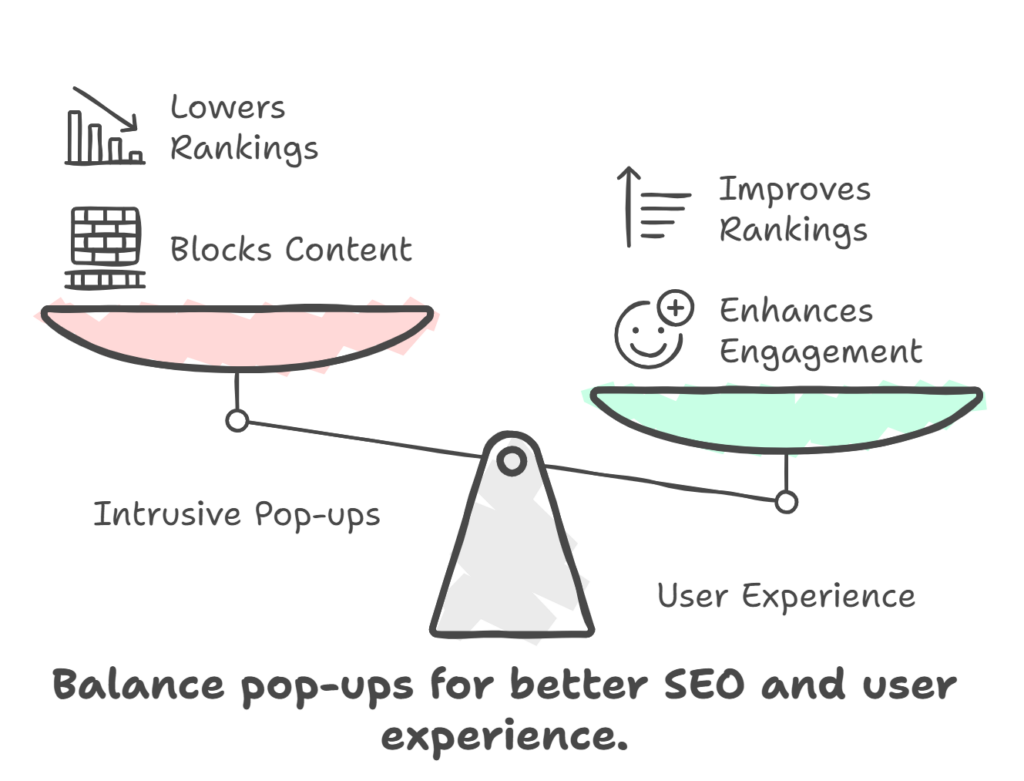
56. Lazy Loading for Images
- What It Is: Use lazy loading to defer off-screen image loading.
- Why It Matters: Lazy loading improves page speed, a key ranking factor for user satisfaction.
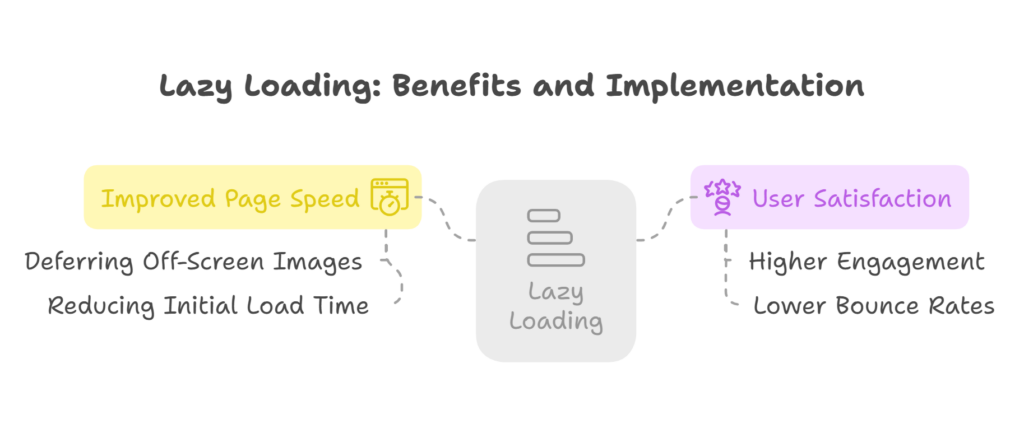
57. Minify CSS and JavaScript
- What It Is: Reduce file sizes by minifying CSS and JS code.
- Why It Matters: Smaller files load faster, enhancing site speed and user experience.
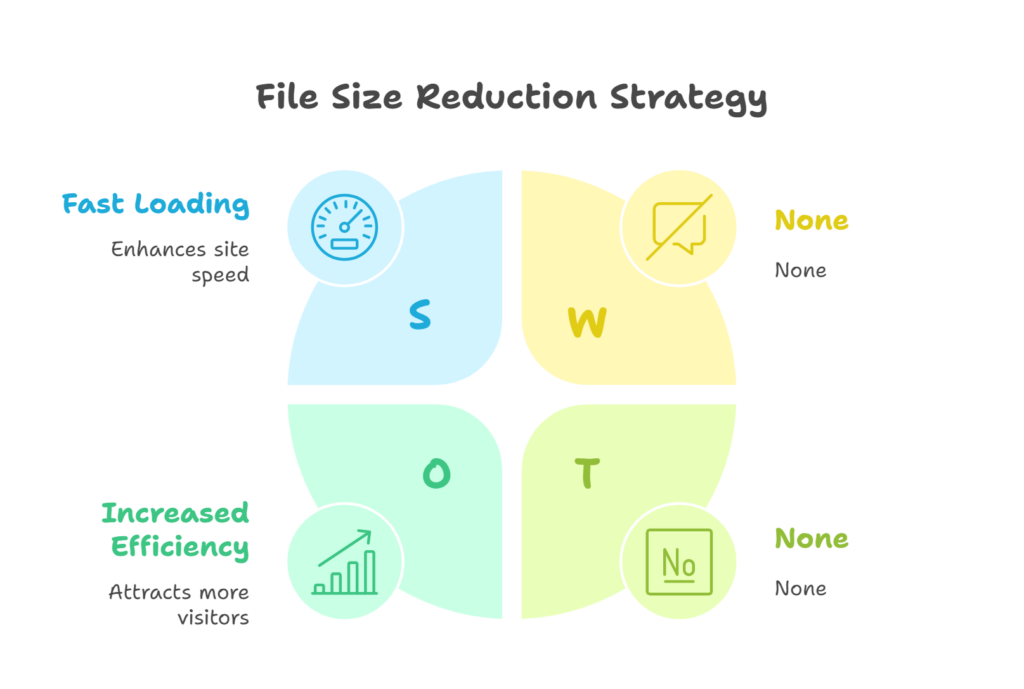
58. Enable Browser Caching
- What It Is: Set up caching to store static files locally.
- Why It Matters: Caching speeds up repeat visits, improving load times and rankings.
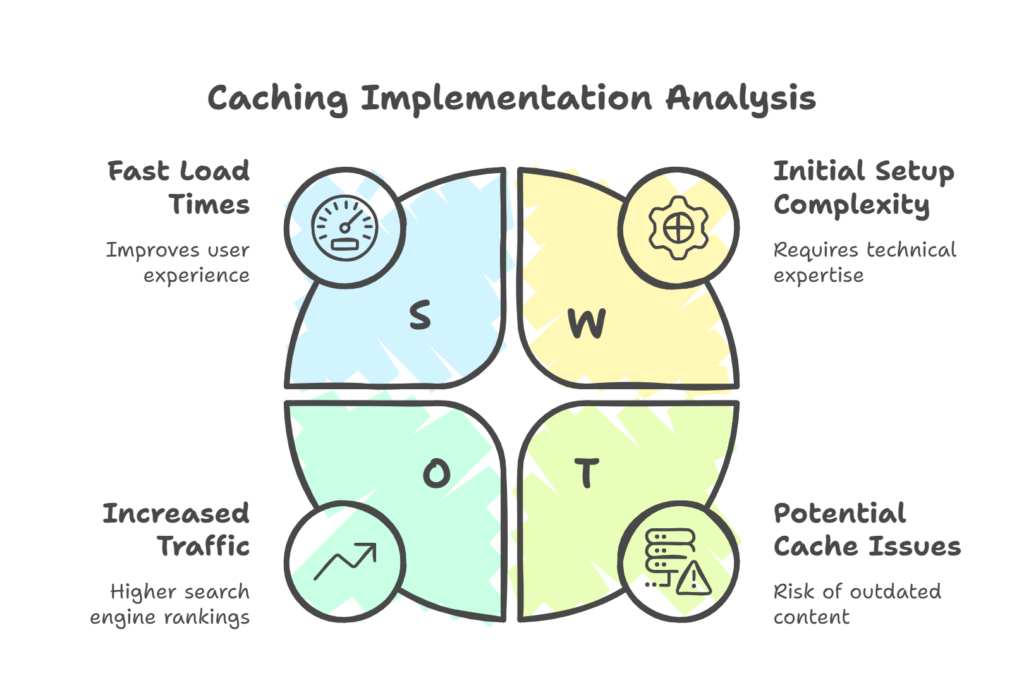
59. Use a Content Delivery Network (CDN)
- What It Is: Distribute content via a CDN for faster global access.
- Why It Matters: CDNs reduce latency, ensuring faster load times for users worldwide.
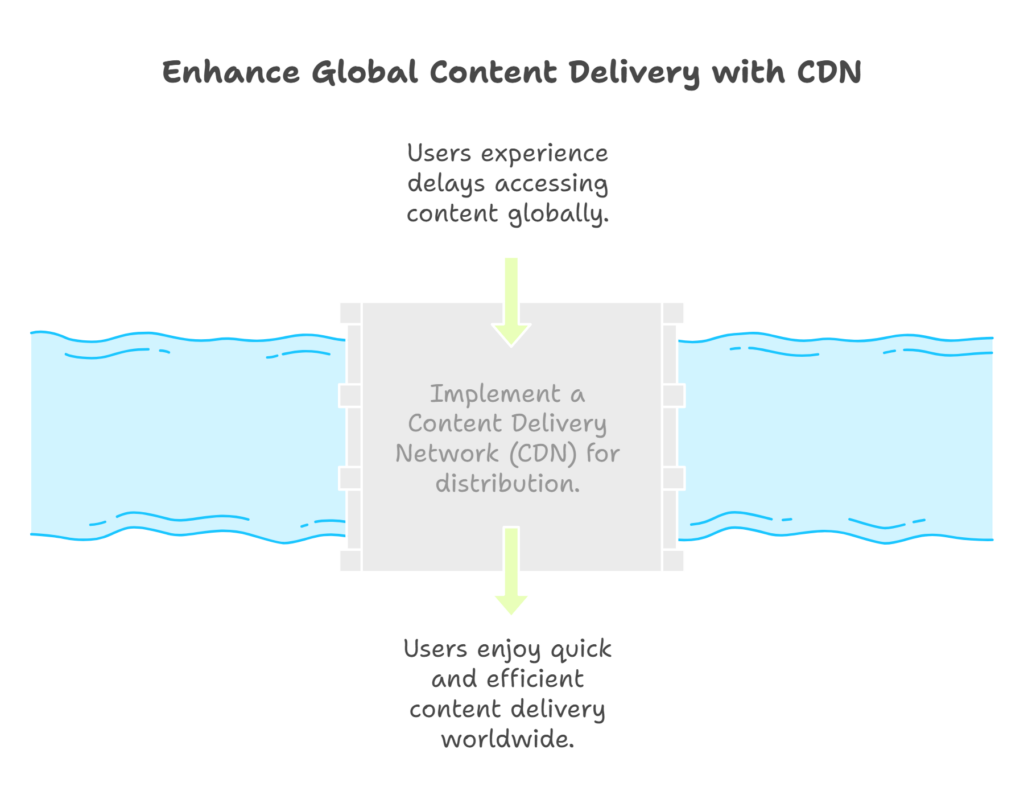
60. Avoid Excessive Redirect Chains
- What It Is: Limit redirect chains to one or two hops.
- Why It Matters: Too many redirects slow down page loading and waste crawl budget.
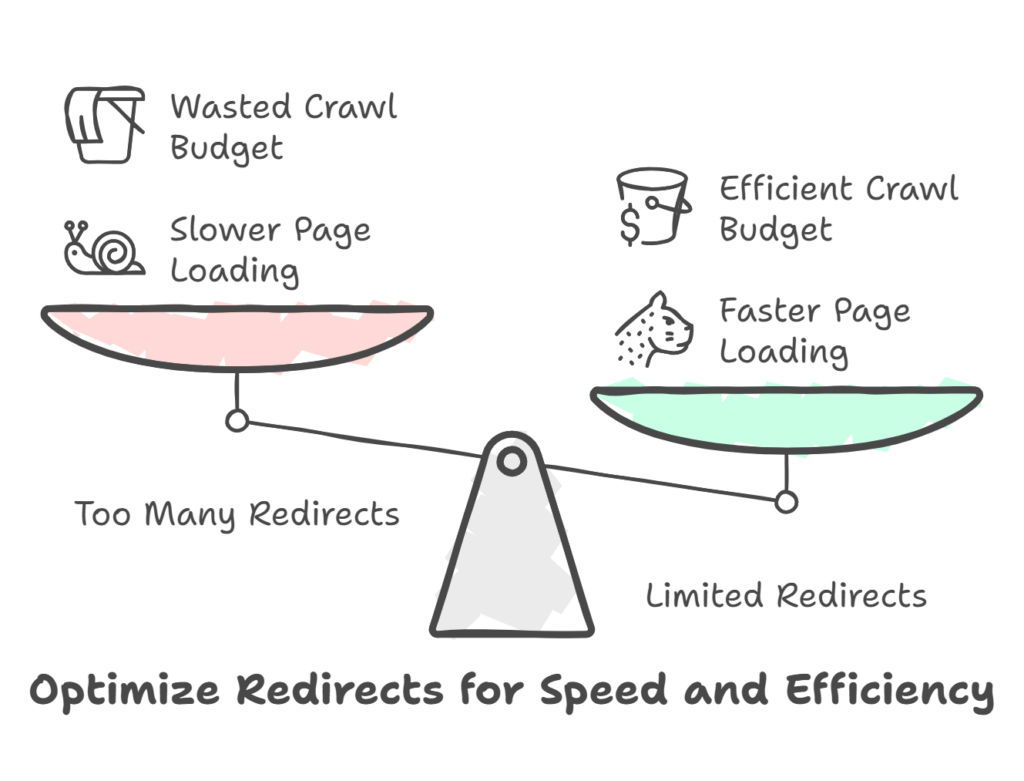
61. Fix Mixed Content Issues
- What It Is: Ensure all resources load over HTTPS, not HTTP.
- Why It Matters: Mixed content warnings can break trust and affect user experience.

62. Optimize for Voice Search
- What It Is: Use conversational keywords for voice queries.
- Why It Matters: Voice search is growing; optimized content can capture featured snippets.
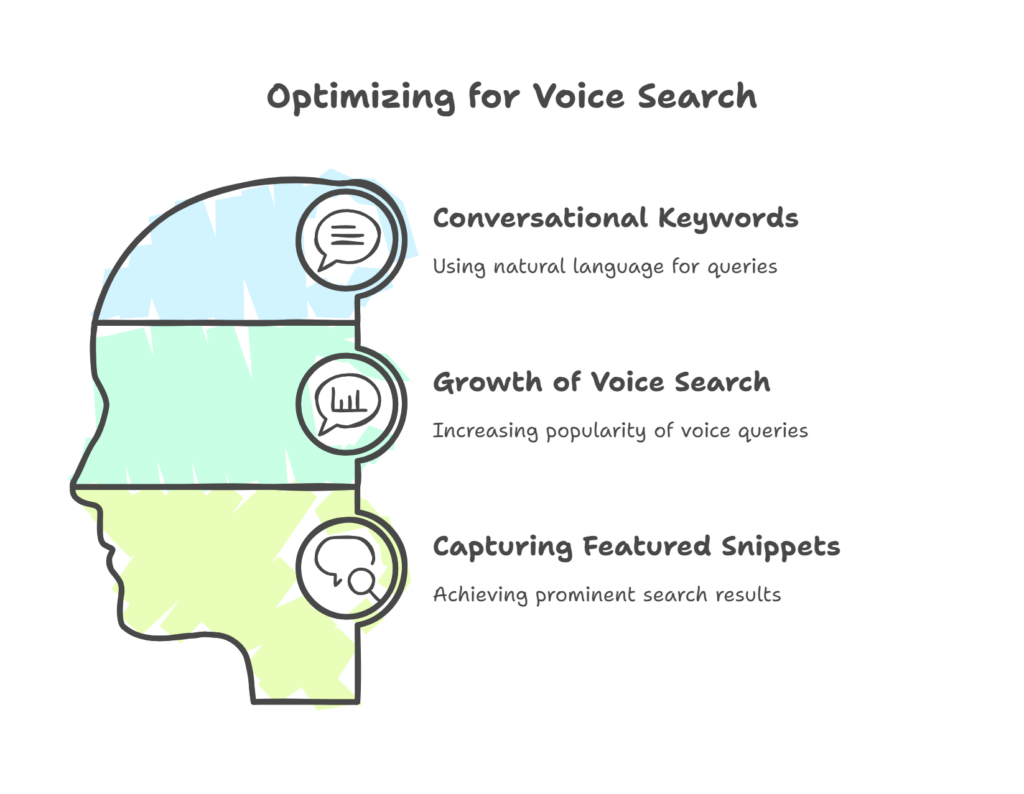
63. Proper Use of NoFollow Tags
- What It Is: Apply nofollow to untrusted or paid links.
- Why It Matters: Nofollow tags prevent passing link equity to low-quality sites, protecting your SEO.
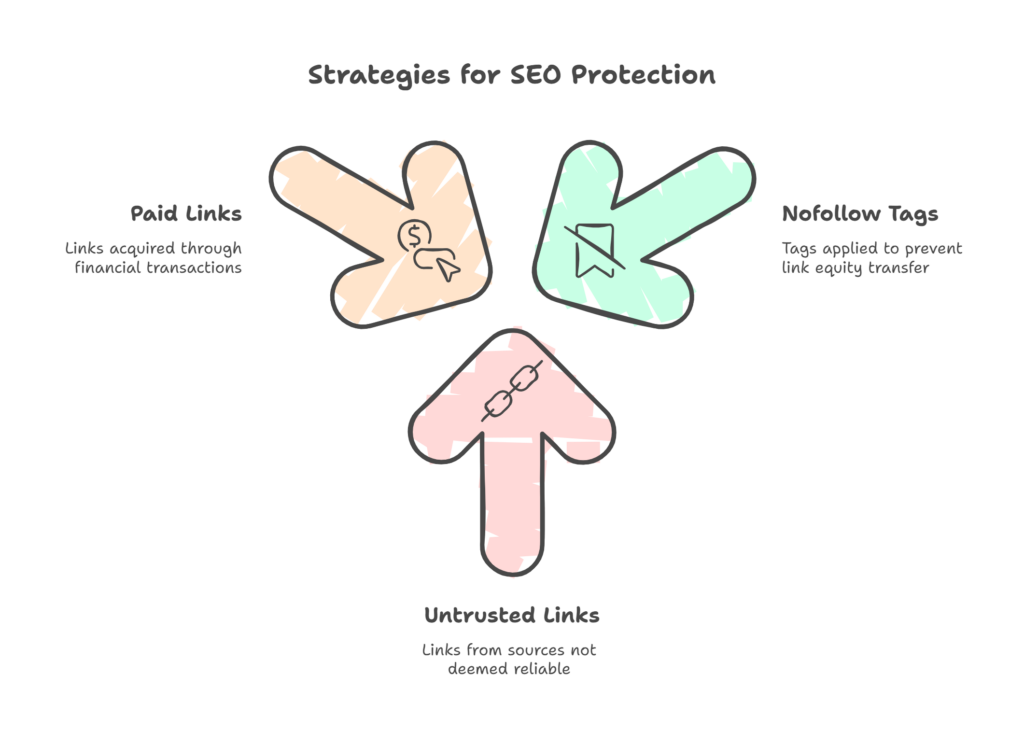
64. Server Uptime Reliability
- What It Is: Choose a hosting provider with high uptime (99.9%+).
- Why It Matters: Downtime prevents Google from crawling your site, hurting rankings.

65. Avoid Overloaded Pages
- What It Is: Don’t overload pages with excessive ads or elements.
- Why It Matters: Cluttered pages frustrate users, increasing bounce rates and lowering rankings.
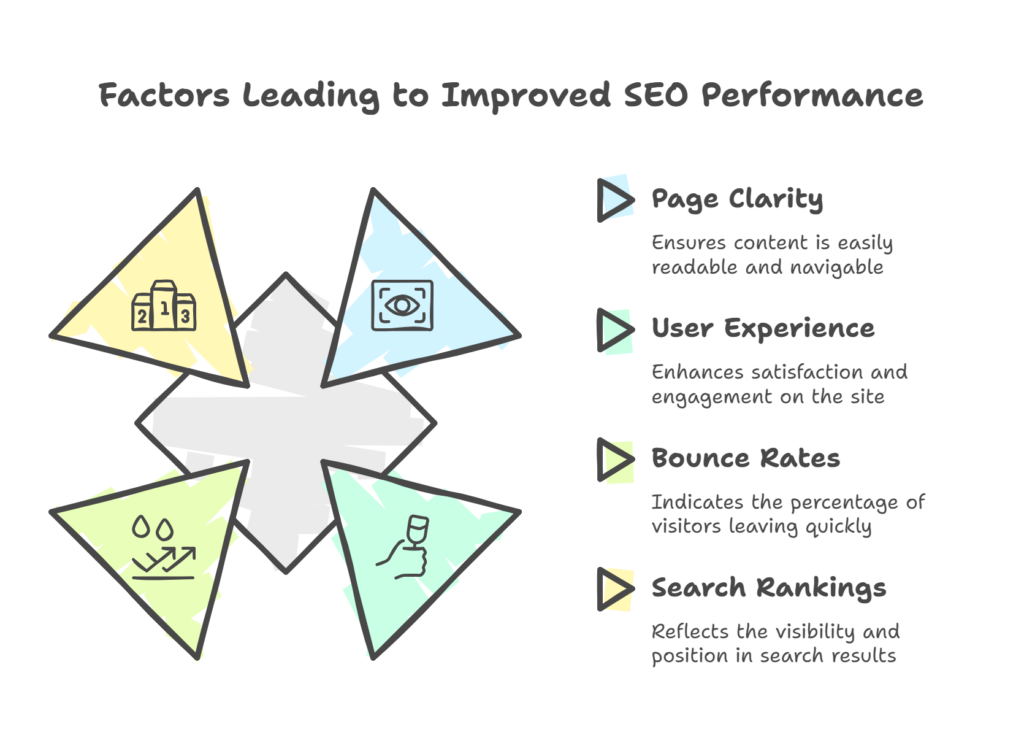
66. Mobile Usability Testing
- What It Is: Test your site with Google’s Mobile-Friendly Test.
- Why It Matters: Mobile usability issues can penalize rankings in mobile-first indexing.
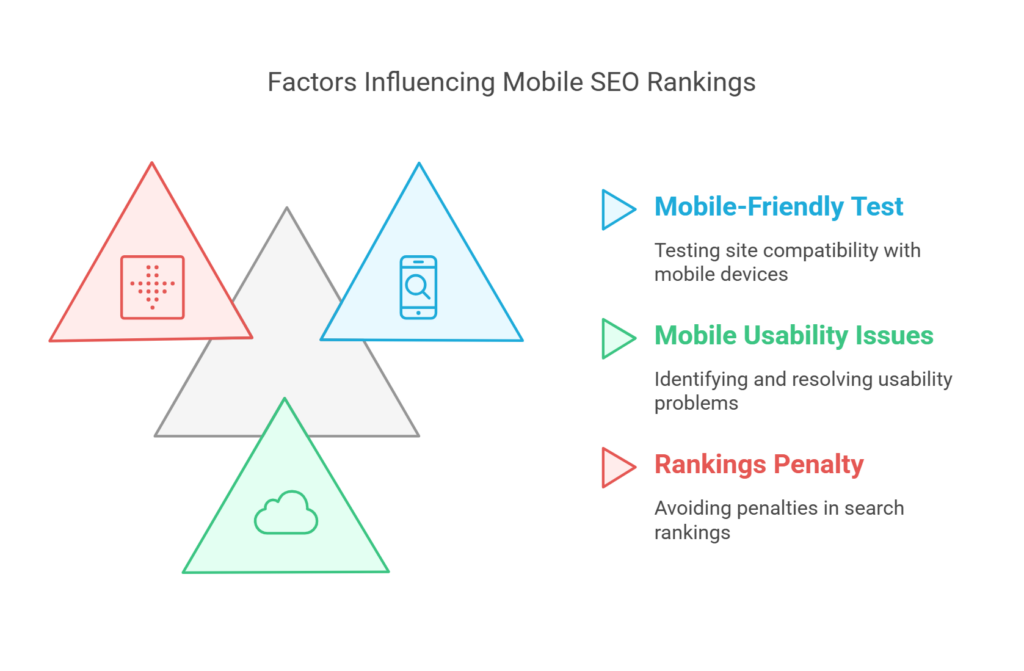
67. Avoid Flash Content
- What It Is: Eliminate Flash, which isn’t supported on most devices.
- Why It Matters: Flash content isn’t crawlable by Google, leaving pages unindexed.

68. Proper Indexing of AJAX Content
- What It Is: Ensure AJAX content is crawlable by Google.
- Why It Matters: Poorly handled AJAX can prevent Google from indexing dynamic content.
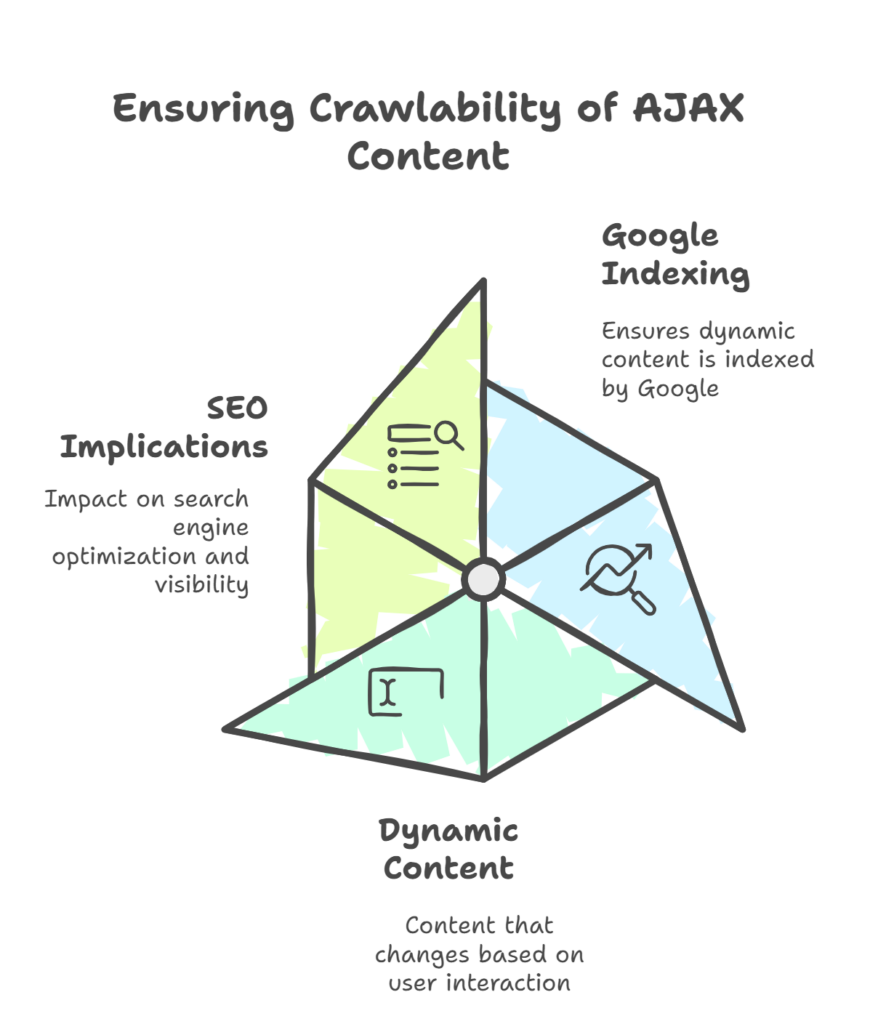
69. Optimize for Local SEO
- What It Is: Use local schema markup and NAP consistency.
- Why It Matters: Local optimization helps your site rank in geographically targeted searches.

70. Avoid Cloaking
- What It Is: Don’t show different content to Google than to users.
- Why It Matters: Cloaking violates Google’s guidelines, risking penalties or deindexing.
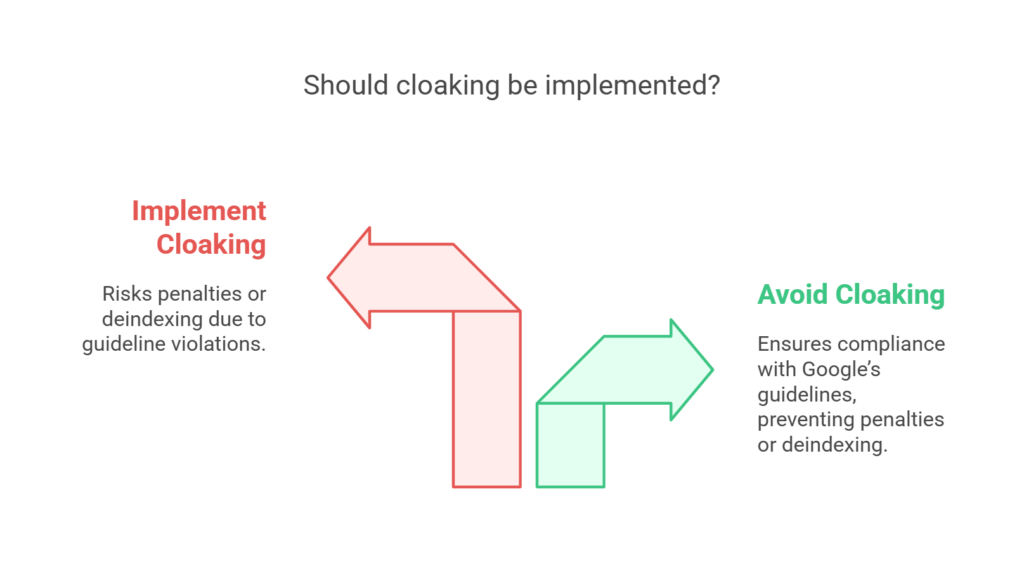
Section 5: Backlink Strategies (Factors 71-90)
Backlinks remain a cornerstone of SEO, signaling trust and authority.
71. High-Quality Backlinks
- What It Is: Earn links from authoritative, relevant websites.
- Why It Matters: Quality backlinks act as votes of confidence, significantly boosting rankings.
72. Number of Referring Domains
- What It Is: Focus on links from unique domains, not just total links.
- Why It Matters: More referring domains indicate broader trust and authority.
73. Relevant Anchor Text
- What It Is: Use descriptive, keyword-relevant anchor text for links.
- Why It Matters: Relevant anchor text helps Google understand the linked page’s topic.
74. Links from High DA Sites
- What It Is: Target backlinks from sites with high Domain Authority (DA 50+).
- Why It Matters: High DA sites pass more link equity, enhancing your site’s authority.
75. Contextual Backlinks
- What It Is: Earn links embedded within relevant content, not sidebars.
- Why It Matters: Contextual links are more valuable, as they’re editorially placed and relevant.
76. Avoid Spammy Backlinks
- What It Is: Disavow links from low-quality or spammy sites.
- Why It Matters: Toxic links can trigger penalties, harming your site’s rankings.
77. Natural Link Profile
- What It Is: Build links organically, avoiding manipulative tactics.
- Why It Matters: A natural profile avoids penalties from Google’s Penguin algorithm.
78. Backlinks from .edu/.gov Domains
- What It Is: Secure links from educational or government sites.
- Why It Matters: These domains are highly trusted, passing significant authority.
79. Links from Niche-Relevant Sites
- What It Is: Focus on backlinks from sites in your industry.
- Why It Matters: Niche-relevant links signal topical authority to Google.
80. Avoid Link Farms
- What It Is: Steer clear of link schemes or directories.
- Why It Matters: Link farms violate Google’s guidelines, risking manual penalties.
81. Dofollow Links
- What It Is: Prioritize dofollow links over nofollow.
- Why It Matters: Dofollow links pass link equity, directly impacting rankings.
82. Backlink Anchor Text Diversity
- What It Is: Use varied anchor text (branded, generic, keyword-rich).
- Why It Matters: Diverse anchor text looks natural, avoiding over-optimization penalties.
83. Links from News Sites
- What It Is: Earn backlinks from reputable news outlets.
- Why It Matters: News sites are authoritative, providing a strong ranking boost.
84. Guest Posting Opportunities
- What It Is: Contribute guest posts to high-quality sites.
- Why It Matters: Guest posts build backlinks and establish your brand as an authority.
85. Links from Social Media
- What It Is: Encourage links from social media platforms.
- Why It Matters: While often nofollow, social links drive traffic and visibility.
86. Avoid Paid Links
- What It Is: Don’t buy links to manipulate rankings.
- Why It Matters: Paid links violate Google’s guidelines, risking penalties.
87. Backlink Growth Rate
- What It Is: Build links steadily, not in sudden spikes.
- Why It Matters: Gradual growth appears organic, avoiding suspicion of manipulation.
88. Links from Forums/Comments
- What It Is: Participate in forums with relevant, non-spammy links.
- Why It Matters: Forum links can drive traffic and build niche authority if done naturally.
89. Links from Competitors
- What It Is: Analyze competitors’ backlinks and target similar sources.
- Why It Matters: Competitor links reveal opportunities in your niche, boosting relevance.
90. Monitor Backlink Health
- What It Is: Use tools like Ahrefs to track and audit backlinks.
- Why It Matters: Regular monitoring helps you disavow toxic links, protecting rankings.
Section 6: On-Page SEO Enhancements (Factors 91-100)
Fine-tune your on-page elements to maximize relevance and user engagement.
91. Keyword in Image File Names
- What It Is: Use descriptive, keyword-rich image file names.
- Why It Matters: Keyworded file names help Google index images, improving image search rankings.
92. Title Tag Starts with Keyword
- What It Is: Place your keyword at the beginning of the title tag.
- Why It Matters: Front-loaded keywords signal relevance, increasing click-through rates.
93. Avoid Over-Optimized Pages
- What It Is: Don’t overstuff keywords or meta tags.
- Why It Matters: Over-optimization can lead to penalties, harming your site’s credibility.
94. Use of LSI Keywords in Body
- What It Is: Include related terms throughout your content.
- Why It Matters: LSI keywords add context, helping Google understand your page better.
95. Content Engagement Metrics
- What It Is: Optimize for high dwell time and low bounce rates.
- Why It Matters: Strong engagement signals to Google that your content is valuable.
96. Proper Use of Bold/Italics
- What It Is: Highlight key phrases with bold or italics.
- Why It Matters: Emphasis tags improve readability and draw attention to important points.
97. Avoid Thin Meta Descriptions
- What It Is: Write descriptive, unique meta descriptions for each page.
- Why It Matters: Thin descriptions hurt click-through rates, lowering SERP performance.
98. Keyword in First Paragraph
- What It Is: Mention your keyword in the opening paragraph.
- Why It Matters: Early keyword placement reinforces topic relevance for Google.
99. Use of External Links Sparingly
- What It Is: Link out only to high-quality, relevant sources.
- Why It Matters: Too many external links can dilute your page’s authority.
100. Page-Specific Keyword Focus
- What It Is: Target one primary keyword per page.
- Why It Matters: A focused keyword strategy avoids cannibalization, improving rankings.
Section 7: Advanced Backlink Strategies (Factors 101-120)
Backlinks continue to shape your site’s authority—here’s how to master them.
101. Backlink Anchor Text Variation
- What It Is: Use a mix of branded, generic, and keyword-rich anchor text.
- Why It Matters: Diverse anchor text looks natural to Google, avoiding over-optimization penalties.
102. Links from Industry Leaders
- What It Is: Secure backlinks from top players in your niche.
- Why It Matters: Links from leaders pass significant authority, boosting your site’s credibility.
103. Broken Link Building
- What It Is: Replace broken links on other sites with your content.
- Why It Matters: This strategy earns high-quality backlinks while helping others fix errors.
104. Skyscraper Content Links
- What It Is: Create better content than competitors to attract links.
- Why It Matters: Superior content naturally draws backlinks, enhancing your ranking potential.
105. Avoid Reciprocal Link Schemes
- What It Is: Don’t exchange links solely for mutual benefit.
- Why It Matters: Reciprocal schemes can be flagged as manipulative by Google, risking penalties.
106. Links from Press Releases
- What It Is: Distribute press releases with backlinks to your site.
- Why It Matters: Press releases can generate high-authority links when distributed through reputable channels.
107. Backlink Velocity Control
- What It Is: Build links at a steady, organic pace.
- Why It Matters: Rapid link growth can trigger Google’s spam filters, harming rankings.
108. Links from Resource Pages
- What It Is: Get listed on niche resource or directory pages.
- Why It Matters: Resource page links are often editorial and relevant, boosting authority.
109. Avoid Low-Quality Directories
- What It Is: Steer clear of spammy or irrelevant directories.
- Why It Matters: Low-quality directory links can hurt your site’s reputation with Google.
110. Backlinks from Blogs
- What It Is: Earn links from popular, active blogs in your field.
- Why It Matters: Blog backlinks often come with context, increasing their SEO value.
111. Competitor Backlink Analysis
- What It Is: Study competitors’ backlinks to identify opportunities.
- Why It Matters: Targeting similar link sources can help you close the ranking gap.
112. Links from Podcasts or Interviews
- What It Is: Appear on podcasts with a link to your site.
- Why It Matters: Podcast mentions build authority and drive targeted traffic.
113. Avoid Link Exchanges
- What It Is: Don’t participate in tit-for-tat link trades.
- Why It Matters: Link exchanges can be seen as manipulative, leading to ranking drops.
114. Backlinks from Reviews
- What It Is: Encourage reviews with links to your site.
- Why It Matters: Review backlinks from trusted sources enhance credibility and visibility.
115. Links from Infographics
- What It Is: Create shareable infographics to earn backlinks.
- Why It Matters: Visual content often gets linked to naturally, boosting your site’s reach.
116. Avoid Auto-Generated Links
- What It Is: Don’t use automated tools to generate backlinks.
- Why It Matters: Auto-links are typically low-quality and can trigger penalties.
117. Backlink Relevance Over Quantity
- What It Is: Prioritize relevant links over a high link count.
- Why It Matters: Relevant backlinks align with your niche, improving topical authority.
118. Links from Local Sources
- What It Is: Earn backlinks from local businesses or media.
- Why It Matters: Local links strengthen your site’s relevance for geographic searches.
119. Monitor Competitor Link Losses
- What It Is: Track when competitors lose backlinks to seize opportunities.
- Why It Matters: Replacing lost links can give you a competitive edge.
120. Backlink Outreach Campaigns
- What It Is: Actively pitch your content to relevant sites.
- Why It Matters: Targeted outreach builds high-quality links, enhancing your SEO profile.
Section 8: Authority and Trust Signals (Factors 121-140)
Building trust and authority is key to long-term ranking success.
121. Domain Age
- What It Is: Leverage an older, established domain.
- Why It Matters: Older domains are often seen as more trustworthy by Google.
122. Domain History
- What It Is: Ensure your domain has a clean past.
- Why It Matters: A history of penalties or spammy use can hurt current rankings.
123. Brand Mentions
- What It Is: Get your brand name mentioned online without links.
- Why It Matters: Unlinked mentions signal brand authority, influencing rankings indirectly.
124. Site Uptime Consistency
- What It Is: Maintain reliable server uptime.
- Why It Matters: Frequent downtime prevents Google from crawling, lowering rankings.
125. SSL Certificate Duration
- What It Is: Renew your SSL certificate regularly.
- Why It Matters: A valid SSL reinforces trust, a minor ranking factor.
126. Contact Page Presence
- What It Is: Include a clear contact page with details.
- Why It Matters: A contact page builds trust, aligning with Google’s E-E-A-T guidelines.
127. About Page Quality
- What It Is: Create a detailed, credible About Us page.
- Why It Matters: A strong About page establishes authority and transparency.
128. Privacy Policy Page
- What It Is: Add a privacy policy to your site.
- Why It Matters: Compliance with privacy laws signals trustworthiness to users and Google.
129. Terms of Service Page
- What It Is: Include a terms of service page.
- Why It Matters: This adds legitimacy, supporting your site’s E-E-A-T score.
130. Business Registration
- What It Is: Verify your business with Google My Business.
- Why It Matters: Registration enhances local SEO and trust signals.
131. Site-Wide HTTPS
- What It Is: Ensure all pages use HTTPS, not just key ones.
- Why It Matters: Full HTTPS implementation strengthens security and ranking signals.
132. Avoid Blacklisted Domains
- What It Is: Check your domain isn’t on blacklists.
- Why It Matters: Blacklisted domains lose trust, impacting rankings severely.
133. Historical SEO Performance
- What It Is: Maintain a consistent SEO history.
- Why It Matters: A history of good performance builds long-term authority.
134. Domain Registration Length
- What It Is: Register your domain for multiple years.
- Why It Matters: Longer registrations signal commitment, a minor trust factor.
135. Site Authority Score
- What It Is: Build a high Domain Authority (DA) score.
- Why It Matters: A strong DA reflects trust and influences ranking potential.
136. Avoid Penalized Links
- What It Is: Disavow links from penalized sites.
- Why It Matters: Penalized links can drag down your site’s authority.
137. Public Relations Efforts
- What It Is: Engage in PR to build brand visibility.
- Why It Matters: PR increases unlinked mentions, boosting authority indirectly.
138. Co-Citations
- What It Is: Get your brand mentioned alongside competitors.
- Why It Matters: Co-citations signal industry relevance without direct links.
139. Avoid Negative SEO Attacks
- What It Is: Monitor for unnatural link spikes from competitors.
- Why It Matters: Negative SEO can harm rankings; proactive monitoring prevents damage.
140. Trust Flow Metrics
- What It Is: Aim for a high trust flow score via Majestic.
- Why It Matters: Trust flow measures link quality, influencing Google’s perception.
Section 9: Additional On-Page and Behavioral Factors (Factors 141-150)
These elements refine on-page SEO and user behavior signals.
141. Keyword in Subdomain
- What It Is: Use keywords in your subdomain (if applicable).
- Why It Matters: Keyworded subdomains can enhance topical relevance.
142. URL Keyword Proximity
- What It Is: Keep keywords close together in URLs.
- Why It Matters: Proximity improves relevance signals for Google.
143. Avoid Orphan Pages
- What It Is: Link all pages to your site’s structure.
- Why It Matters: Orphan pages aren’t crawled, reducing their SEO value.
144. Page-Level Keyword Consistency
- What It Is: Maintain keyword focus throughout a page.
- Why It Matters: Consistency reinforces relevance, improving rankings.
145. Bounce Rate Impact
- What It Is: Minimize users leaving after one page.
- Why It Matters: High bounce rates signal low-quality content to Google.
146. Dwell Time Optimization
- What It Is: Keep users on your page longer with engaging content.
- Why It Matters: Longer dwell time indicates value, boosting rankings.
147. Click-Through Rate (CTR)
- What It Is: Improve CTR with compelling titles and meta descriptions.
- Why It Matters: Higher CTR suggests relevance, influencing rankings indirectly.
148. Time on Site
- What It Is: Encourage longer visits with valuable content.
- Why It Matters: Extended time on site signals quality to Google’s algorithm.
149. Pages per Session
- What It Is: Increase the number of pages users visit.
- Why It Matters: More pages per session indicate a satisfying user experience.
150. Avoid High Exit Rates
- What It Is: Reduce exits from key pages.
- Why It Matters: High exit rates can suggest poor content quality or relevance.
Section 10: User Experience (UX) and Behavioral Signals (Factors 151-170)
User experience and behavior metrics play a significant role in how Google evaluates your site.
151. Site Navigation Usability
- What It Is: Ensure intuitive navigation menus and links.
- Why It Matters: Easy navigation keeps users engaged, reducing bounce rates and improving rankings.
152. Page Layout Clarity
- What It Is: Design a clean, uncluttered page layout.
- Why It Matters: A clear layout enhances user experience, encouraging longer visits and better engagement.
153. Avoid Above-the-Fold Ads
- What It Is: Don’t place intrusive ads above the main content.
- Why It Matters: Ads that block content frustrate users, increasing bounce rates and hurting rankings.
154. Mobile Navigation Ease
- What It Is: Optimize navigation for mobile users (e.g., hamburger menus).
- Why It Matters: Mobile-friendly navigation is crucial for Google’s mobile-first indexing.
155. Clear Call-to-Actions (CTAs)
- What It Is: Use prominent, action-oriented CTAs on pages.
- Why It Matters: Effective CTAs guide users, improving engagement and conversion rates.
156. Font Size Readability
- What It Is: Use readable font sizes (16px+ for body text).
- Why It Matters: Readable fonts enhance user experience, especially on mobile devices.
157. Avoid Pop-Up Overload
- What It Is: Limit pop-ups that disrupt user experience.
- Why It Matters: Excessive pop-ups annoy users, leading to higher bounce rates.
158. Page Scrollability
- What It Is: Ensure smooth scrolling on all devices.
- Why It Matters: Poor scrolling frustrates users, negatively impacting engagement metrics.
159. Visual Appeal of Design
- What It Is: Create a visually appealing, professional design.
- Why It Matters: Attractive design retains users longer, signaling quality to Google.
160. Avoid Auto-Playing Media
- What It Is: Don’t auto-play videos or audio on load.
- Why It Matters: Auto-playing media can annoy users, increasing exit rates.
161. Pogo-Sticking Reduction
- What It Is: Prevent users from quickly returning to SERPs.
- Why It Matters: Pogo-sticking signals irrelevant content, lowering your rankings.
162. Direct Answer Content
- What It Is: Provide concise answers to common queries.
- Why It Matters: Direct answers can win featured snippets, boosting visibility.
163. User Interaction with Forms
- What It Is: Optimize forms for ease of use (e.g., minimal fields).
- Why It Matters: User-friendly forms increase conversions, improving engagement signals.
164. Avoid Broken Internal Links
- What It Is: Fix internal links that lead to 404 errors.
- Why It Matters: Broken links disrupt user experience, harming rankings.
165. Page Accessibility (ADA Compliance)
- What It Is: Ensure your site meets accessibility standards.
- Why It Matters: Accessible sites reach more users, aligning with Google’s inclusivity goals.
166. Search Intent Satisfaction
- What It Is: Deliver content that fully satisfies user queries.
- Why It Matters: Satisfied users stay longer, signaling relevance to Google.
167. Behavioral Signal Tracking
- What It Is: Monitor metrics like bounce rate, dwell time, and CTR.
- Why It Matters: Strong behavioral signals indicate quality content, boosting rankings.
168. Avoid Content Gaps
- What It Is: Cover all aspects of a topic without omissions.
- Why It Matters: Content gaps lead to unmet user needs, increasing pogo-sticking.
169. User Feedback Integration
- What It Is: Collect and act on user feedback to improve content.
- Why It Matters: Addressing user needs enhances satisfaction and engagement.
170. Avoid Slow Page Transitions
- What It Is: Ensure fast transitions between pages.
- Why It Matters: Slow transitions frustrate users, negatively impacting UX signals.
Section 11: Social Signals and Engagement (Factors 171-185)
Social engagement can indirectly influence your SEO performance.
171. Social Media Shares
- What It Is: Encourage sharing of content on social platforms.
- Why It Matters: Shares increase visibility, driving traffic and potential backlinks.
172. Social Media Engagement
- What It Is: Foster likes, comments, and interactions on social posts.
- Why It Matters: High engagement signals content quality, indirectly boosting SEO.
173. Social Media Presence
- What It Is: Maintain active profiles on major platforms.
- Why It Matters: A strong social presence builds brand authority, supporting rankings.
174. Branded Social Profiles
- What It Is: Link to your site from verified social accounts.
- Why It Matters: Branded profiles enhance trust and drive referral traffic.
175. Social Signals from X
- What It Is: Encourage mentions and shares on X.
- Why It Matters: X activity can amplify content reach, leading to more backlinks.
176. Social Signals from Facebook
- What It Is: Promote content on Facebook for likes and shares.
- Why It Matters: Facebook engagement increases visibility, supporting SEO efforts.
177. Social Signals from LinkedIn
- What It Is: Share professional content on LinkedIn.
- Why It Matters: LinkedIn shares can attract industry attention, driving quality traffic.
178. Avoid Fake Social Signals
- What It Is: Don’t buy fake likes or shares.
- Why It Matters: Fake signals can harm credibility, negating any SEO benefits.
179. Social Media Posting Frequency
- What It Is: Post regularly to keep your audience engaged.
- Why It Matters: Consistent activity maintains visibility, supporting brand authority.
180. Social Media Backlinks
- What It Is: Include links to your site in social posts.
- Why It Matters: Social links drive traffic, even if they’re nofollow, aiding SEO indirectly.
181. Engagement with Influencers
- What It Is: Collaborate with influencers for content promotion.
- Why It Matters: Influencer shares amplify reach, increasing traffic and link opportunities.
182. Social Media Content Quality
- What It Is: Share high-quality, relevant content on social platforms.
- Why It Matters: Quality content drives engagement, supporting your SEO strategy.
183. Social Media Profile Completeness
- What It Is: Fully optimize your social media profiles.
- Why It Matters: Complete profiles rank higher in social searches, boosting brand visibility.
184. Avoid Social Spam
- What It Is: Don’t spam followers with irrelevant posts.
- Why It Matters: Spammy behavior reduces engagement, hurting your social signals.
185. Social Media Analytics
- What It Is: Use analytics to track social performance.
- Why It Matters: Analytics help refine your strategy, maximizing SEO benefits.
Section 12: Additional SEO Factors (Factors 186-200)
These final factors cover miscellaneous elements that impact rankings.
186. Site Speed on Mobile
- What It Is: Optimize mobile page speed specifically.
- Why It Matters: Mobile speed is critical for Google’s mobile-first indexing.
187. Avoid Keyword Cannibalization
- What It Is: Don’t target the same keyword on multiple pages.
- Why It Matters: Cannibalization confuses Google, splitting ranking potential.
188. Video Content Inclusion
- What It Is: Add relevant videos to your pages.
- Why It Matters: Videos increase dwell time, improving engagement signals.
189. FAQ Pages for Queries
- What It Is: Create FAQ pages to answer common questions.
- Why It Matters: FAQs can rank for long-tail queries and win featured snippets.
190. Avoid Over-Optimized Anchor Text
- What It Is: Don’t overuse exact-match anchor text in internal links.
- Why It Matters: Over-optimization can trigger penalties, harming rankings.
191. Local Business Citations
- What It Is: Ensure consistent NAP (Name, Address, Phone) across directories.
- Why It Matters: Citations boost local SEO, improving rankings for local searches.
192. User Reviews and Ratings
- What It Is: Encourage users to leave reviews on your site.
- Why It Matters: Reviews enhance trust and can appear in rich snippets, boosting CTR.
193. Avoid Hidden Text
- What It Is: Don’t hide text (e.g., white text on white background).
- Why It Matters: Hidden text is a black-hat tactic, risking penalties.
194. Content Syndication Strategy
- What It Is: Syndicate content with proper canonical tags.
- Why It Matters: Syndication increases reach without duplicate content issues.
195. Avoid Doorway Pages
- What It Is: Don’t create pages solely to funnel users to another page.
- Why It Matters: Doorway pages violate Google’s guidelines, risking penalties.
196. Site Security Monitoring
- What It Is: Regularly check for malware or hacking.
- Why It Matters: Hacked sites lose trust, leading to ranking drops or deindexing.
197. Content Update Frequency
- What It Is: Update evergreen content periodically.
- Why It Matters: Regular updates signal freshness, maintaining long-term rankings.
198. Avoid Thin Affiliate Pages
- What It Is: Don’t create affiliate pages with little value.
- Why It Matters: Thin affiliate content can lead to penalties, lowering site quality.
199. User-Generated Content (UGC)
- What It Is: Encourage comments, reviews, or forum posts.
- Why It Matters: UGC adds fresh content, improving engagement and rankings.
200. Avoid Excessive Outbound Links
- What It Is: Limit the number of outbound links per page.
- Why It Matters: Too many outbound links can dilute your page’s authority.
Conclusion: Mastering Google Rankings with Alpha Media
Congratulations on completing Alpha Media’s guide to 200 Google ranking factors for 2025! From content quality to user experience, backlinks to behavioral signals, these factors form the foundation of a successful SEO strategy. By implementing these insights, you can optimize your site for better visibility, traffic, and conversions. At Alpha Media, we’re committed to empowering your digital success with expert strategies and actionable advice. Special thanks to Brian Dean of Backlinko for inspiring this guide with his original research.
About the Author: Anshul Sethi is an SEO strategist at Alpha Media, dedicated to helping businesses thrive online through data-driven optimization techniques.

